Valletta (Maltese name: il-Belt Valletta) is the capital of the Republic of Malta, located on the east coast of the main island of the country - the island of Malta, between two bays of the Mediterranean Sea: Marsamxett Harbor and the Great Harbor (Grand Harbour).
The city of Valletta is relatively small and it is easy to get around on foot. Despite its modest size, the city of Valletta is one continuous attraction, where churches, palaces and historical buildings are densely built along narrow streets and around small squares, the architecture of many of which varies from the Baroque of the mid-16th century to modernism.
The city is also known for its fortifications, consisting of the former city wall surrounding the city, as well as bastions and cavaliers. Today, beautiful panoramic views open from the former fortifications of the city, and small but cozy gardens are laid out on parts of the fortifications.
In part of the historical buildings of the city there are now museums.
Since 1980, the entire city of Valletta has been included in the UNESCO World Heritage List.
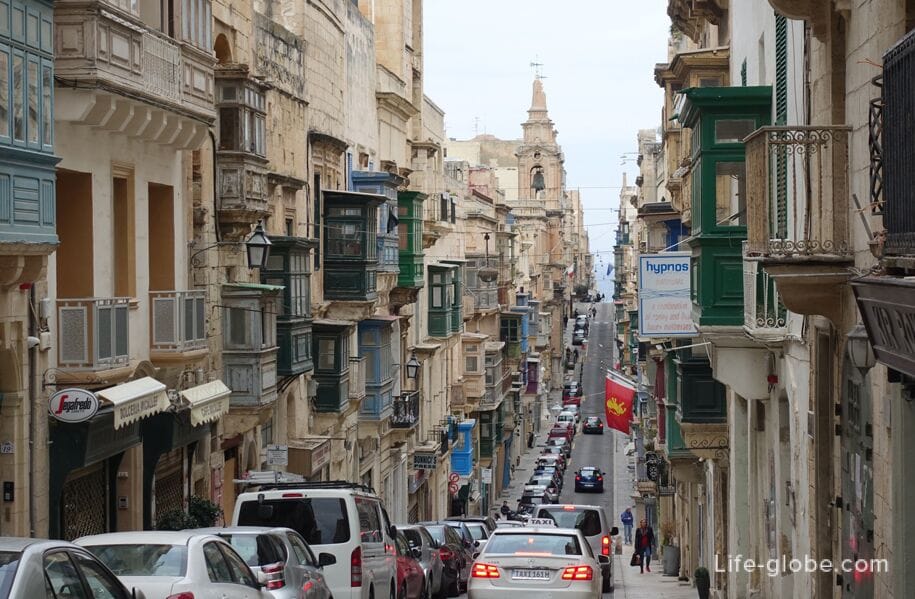


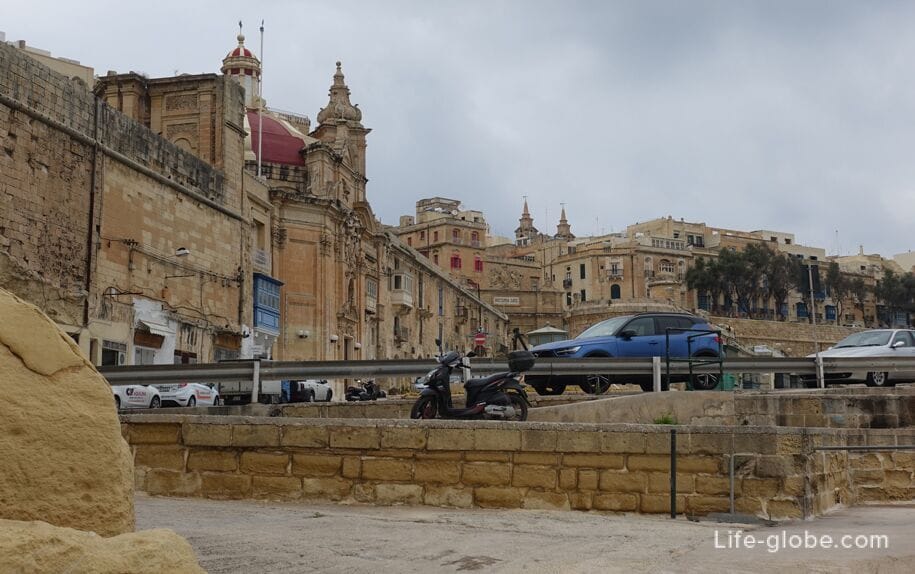
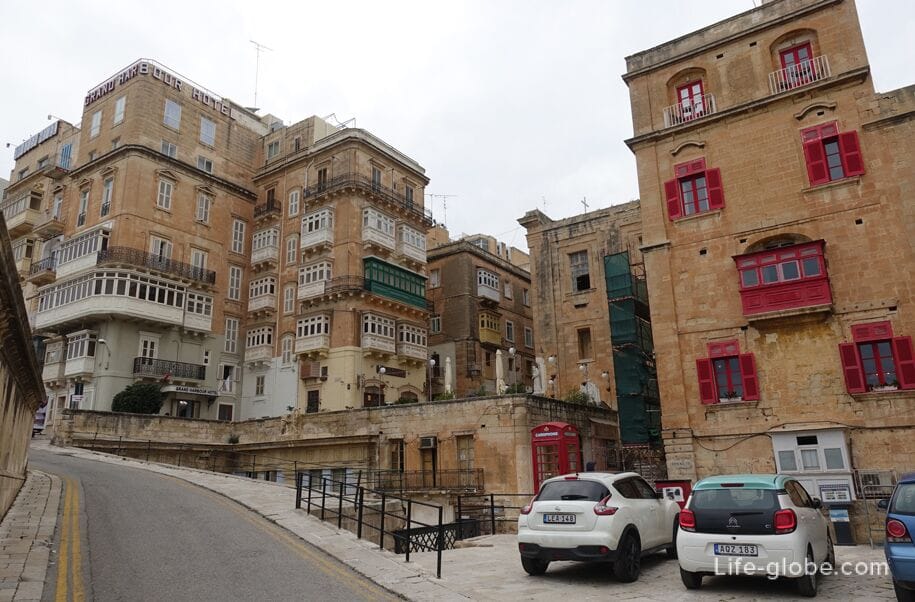
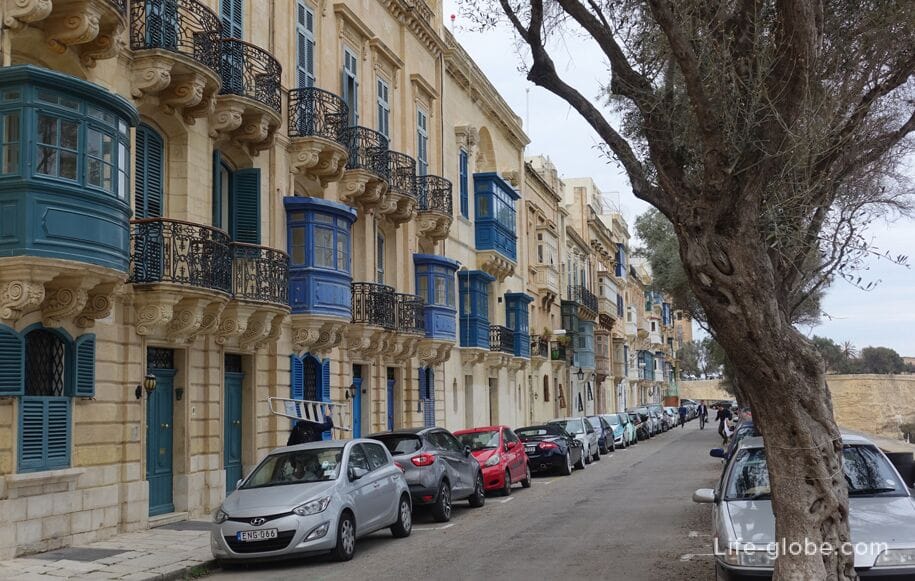
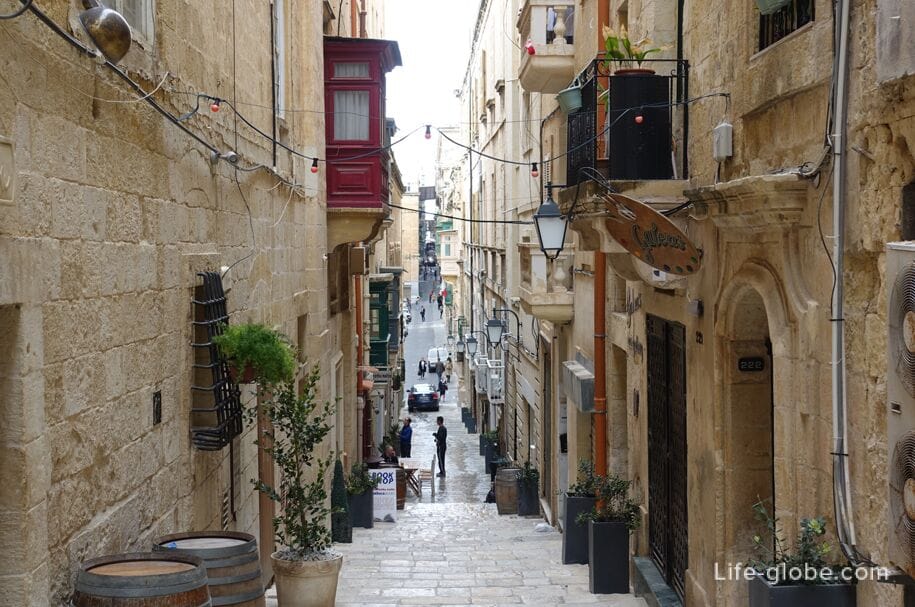
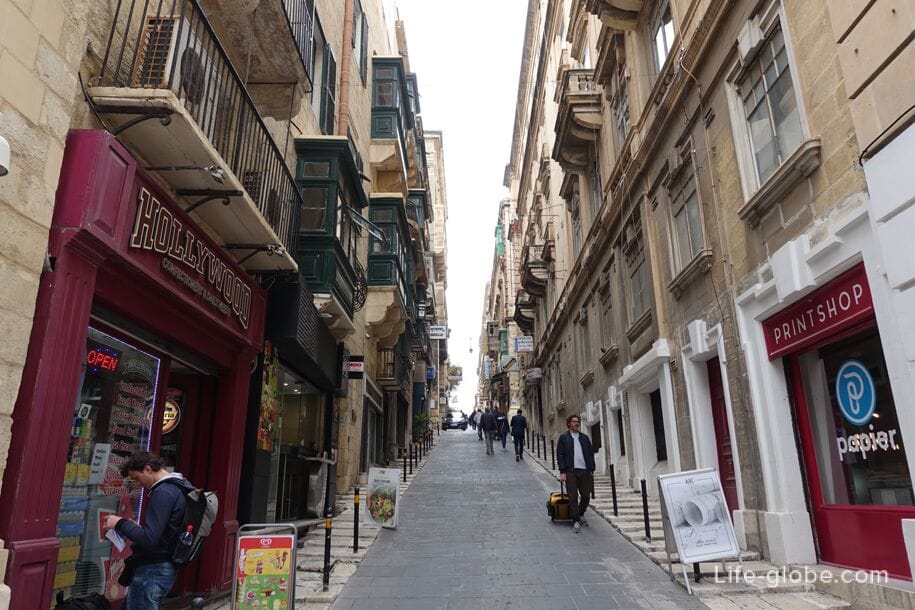
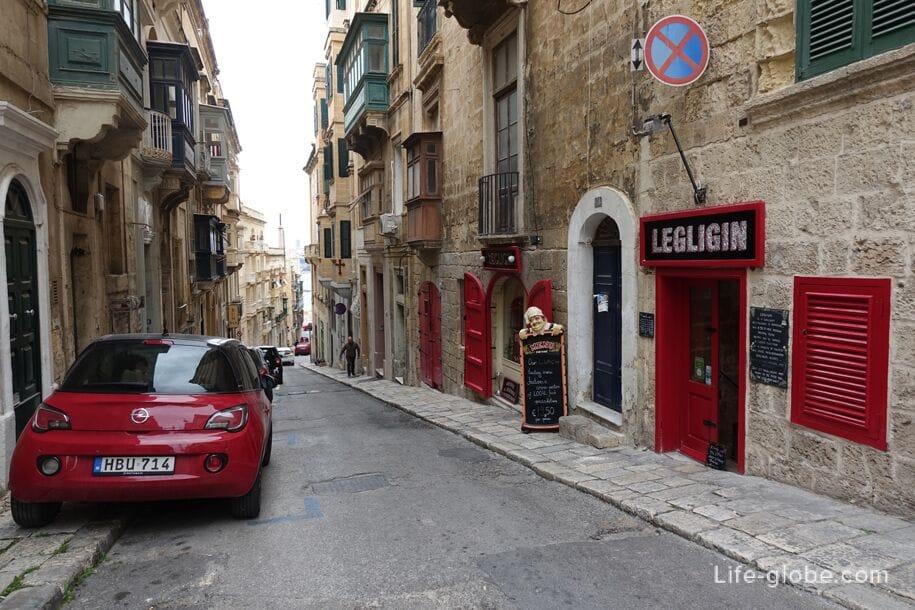


Sights and museums of Valletta
The main attractions and museums of Valletta include
Triton Fountain
The Triton Fountain (Il-Funtana tat-Tritoni) is the largest and perhaps the most recognizable fountain of the island of Malta, located on the periphery of the city gate in Valletta, almost on the border with the city of Floriana.
The fountain was designed and erected between 1952 and 1959 by Maltese sculptor Chevalier Vincent Apap and Maltese designer Victor Anastasi.
The fountain consists of three large bronze figures of mythological newts holding a dish from which jets of water are beating, resembling an airy two-tiered cake. The tritons are positioned so that the face of each of them can be seen from the side of the Valletta city gate. The tritons themselves are located on a large round bowl of the fountain, into which, from the lower bowl, water jets beat. More about the Triton Fountain...
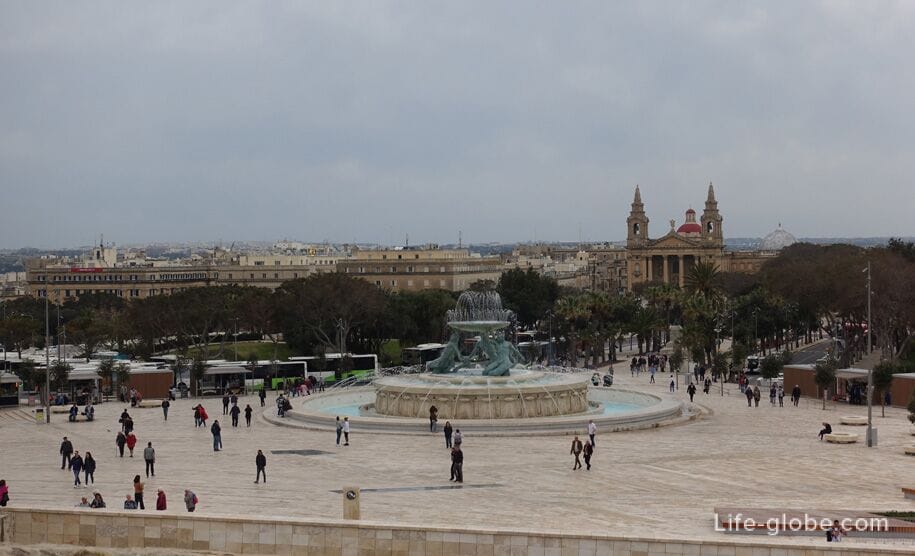
City Gates
The City Gate (Bieb il-Belt), which literally means "The Door to the City", is a former gate located at the entrance to Valletta and part of the former city walls (fortifications) of the city.
Now the gates mark the beginning of the main street of the city - Republic Street.
The current gate, which is the fifth, was built between 2011 and 2014 by the Italian architect Renzo Piano. The entrance to the city gate is via a bridge running over a deep moat, which now houses a parking lot and a park area.
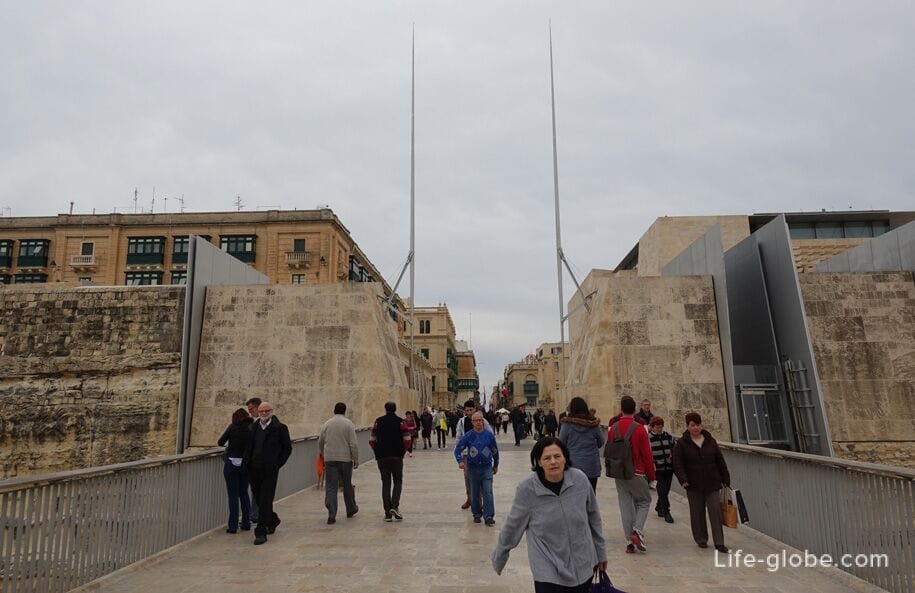
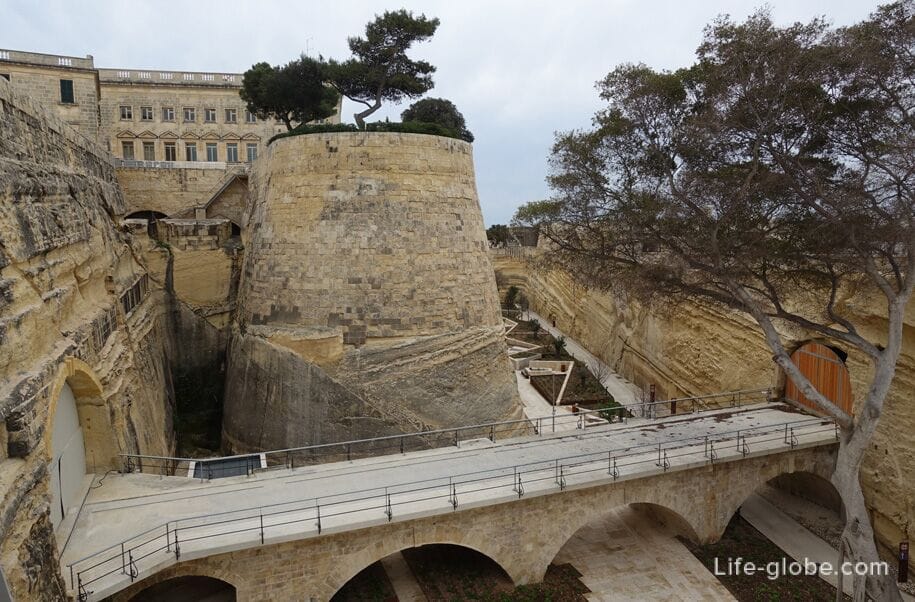

Freedom Square
Freedom Square (Misrah IL-elsElsien) is located just outside the city gates.
On Freedom Square there are:
- The Maltese Parliament Building, built between 2011 and 2015 by Renzo Piano;
- The remains of the Royal Opera House (It-Teatru Rjal), erected in 1866 and is one of the most beautiful and iconic buildings in Valletta. The theater received a direct hit from an aerial bombing in 1942 during World War II. After several abandoned plans to rebuild the theater, the ruins were redesigned by the Italian architect Renzo Piano, and in 2013 the theater began functioning again as an open-air concert hall (Pjazza Teatru Rjal);
- The Ferreria Palace (Palazzo Buttiġieġ-Francia) in the style of Italian classics, built at the end of the 19th century by architect Giuseppe Bonavia. It was the first building that introduced the fashion for the famous wooden balconies on the facades of houses on the islands of Malta.
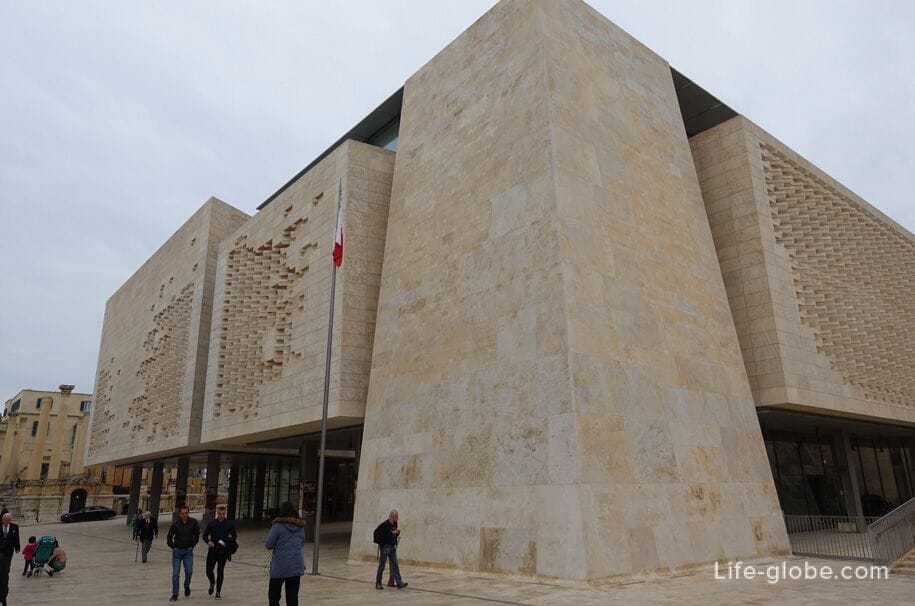
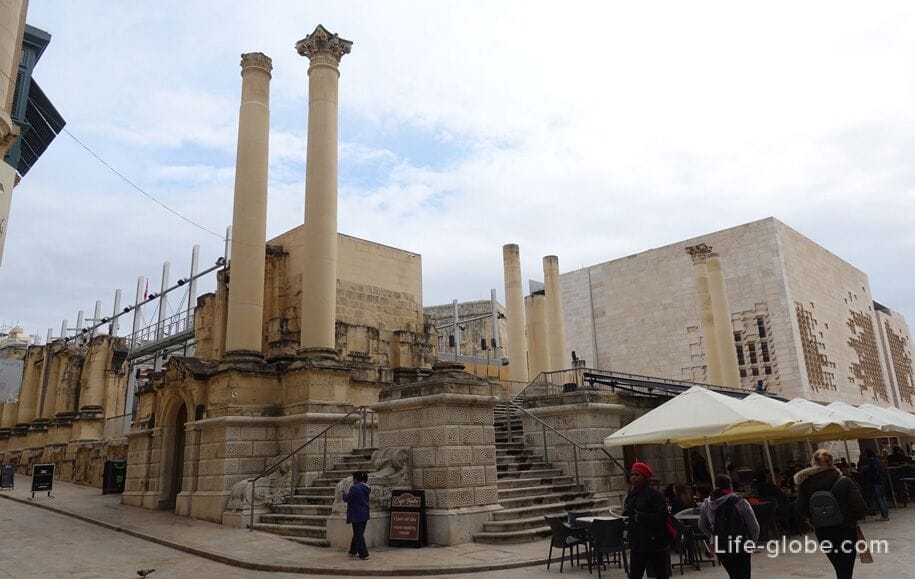
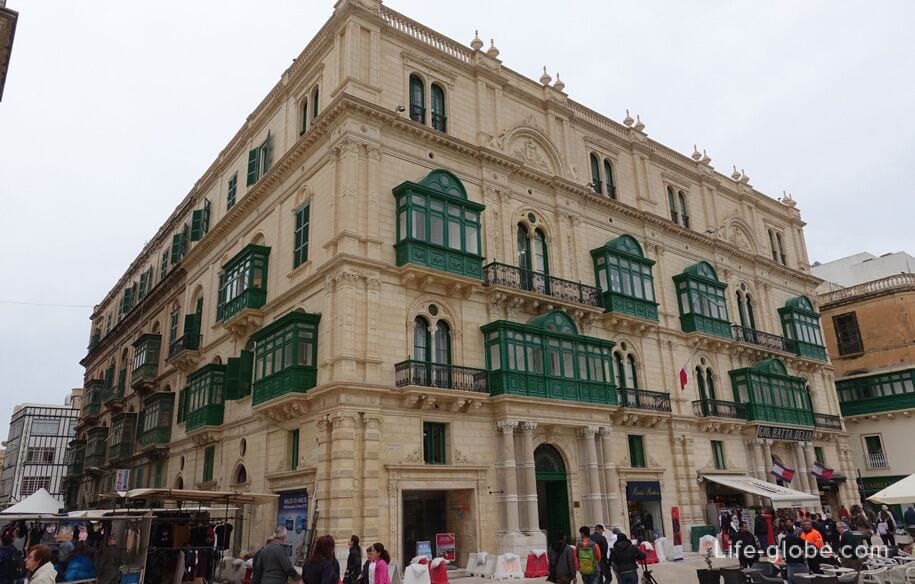
Republic Street
Republic Street (Triq Ir-Repubblika, formerly Kingsway) is the central street and the main artery of Valletta, which divides the city exactly in half along its entire length.
Republic Street is one of the widest and busiest streets in the city, stretching from the City Gate to Fort Sant'elma (sea line). The length of the street is approximately 900 meters.
Along the street there are historical buildings, including churches and palaces, the National Archaeological Museum located in the Baroque palace, as well as squares, shops, cafes, restaurants and accommodation facilities (hotels, apartments)
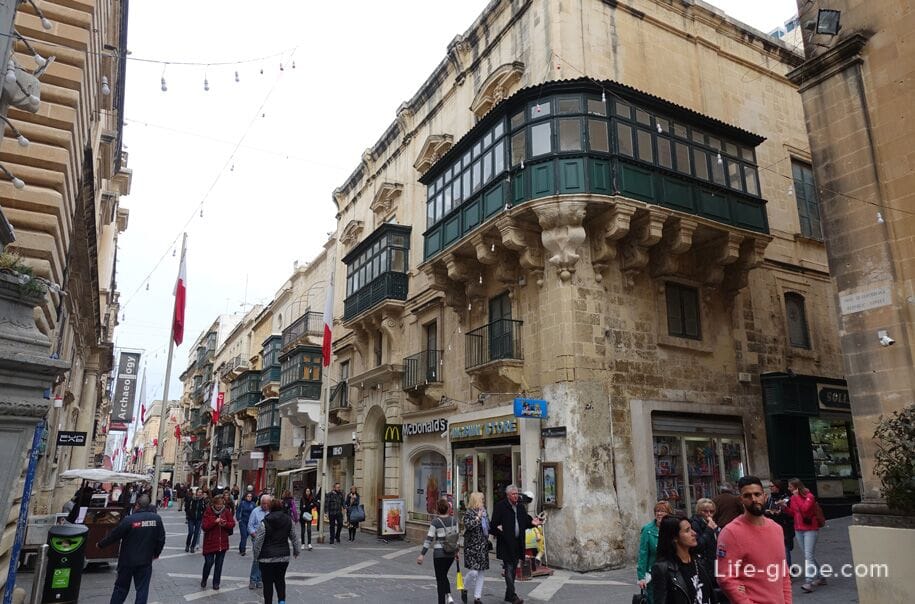

Fort of St. Elmo
Fort St. Elmo (Fort Sant'Elmo, Forti Sant'Iermu) is a star-shaped fort located on the seashore of the Skiberras Peninsula, which separates the harbor of Marsamxett from the Big Harbor.
The construction of the fort was started in 1552. The fort is best known for its role in the Great Siege of Malta in 1565. During the British rule, the fort was changed.
Today , part of the fort housesThe National Military Museum, which houses artifacts related to the military history of Malta, starting from the Bronze Age and ending with Malta's accession to the European Union in 2004. An important collection of the museum dates back to the Second World War. Museum website: national-war-museum.
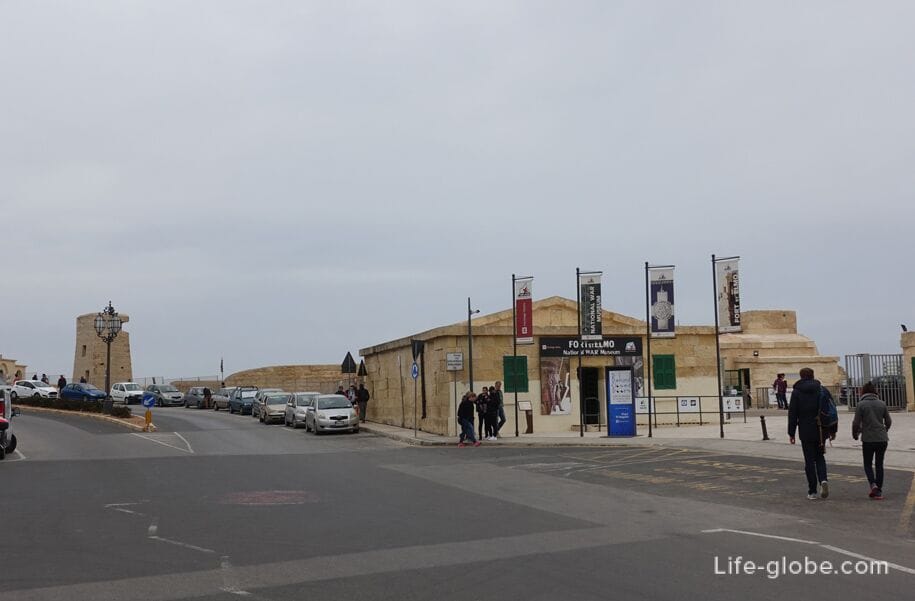

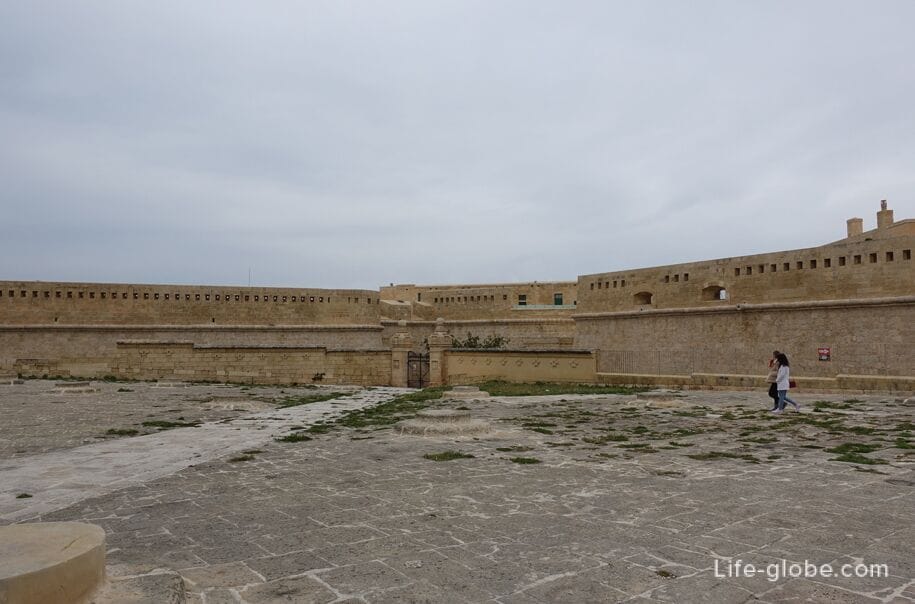

Panoramic views of the harbor open from the fort and from the site near it.

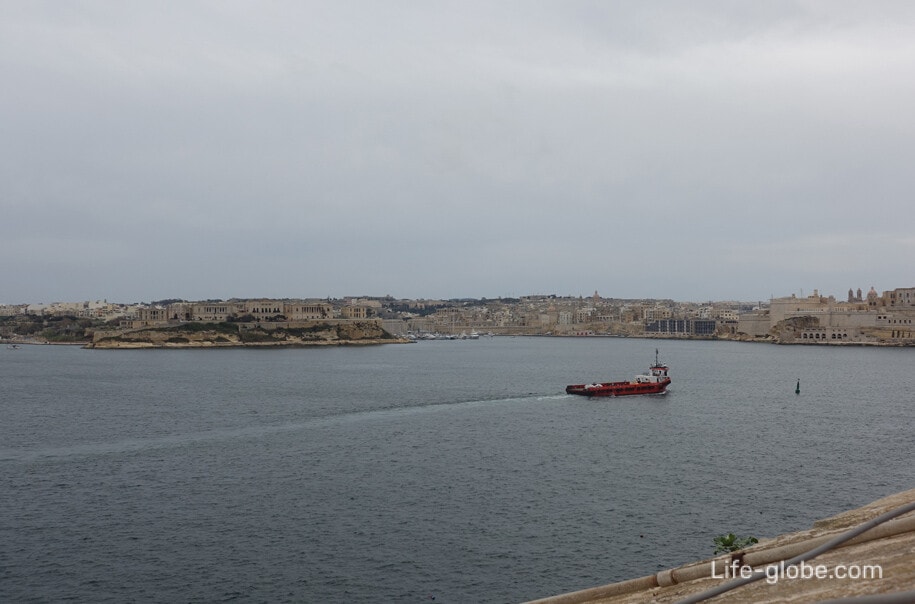

Mediterranean Conference Center
The Mediterranean Conference Center (Dar il-Mediterraneangall-Konferenzi) is located in a building built as a hospital in the 16th century. It was one of the leading hospitals in Europe until the 18th century, and it was used until 1920.
Currently, the building is used as a museum, as well as for banquets, exhibitions, international conventions and theatrical performances.
Website: mcc.com.mt .
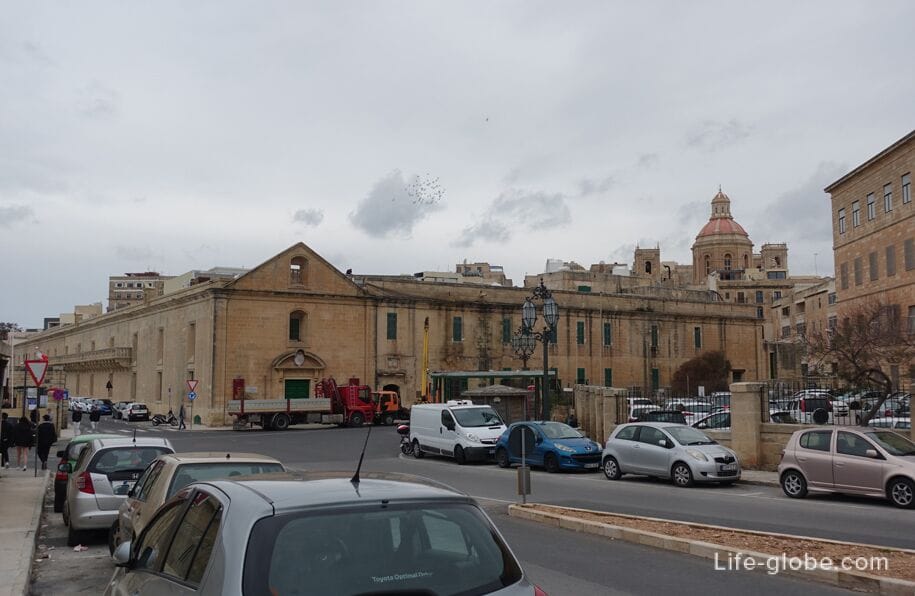

Victory Bell War Memorial
The Victory Bell or World War II Siege Memorial is located on the Bastion of Castile (St. Christopher), the farthest point of Valletta in the Great Harbor.
The memorial erected in memory of the tragedies of the Second World War in Malta - the people who died during the war, was opened by Queen Elizabeth II in 1992 in honor of the fiftieth anniversary of the day when Malta was awarded the George Cross.
The bell rings, as a rule, every day at noon.
The monument offers views of the Mediterranean Sea, Fort Sant'Elmo, breakwater, lighthouse, Fort Ricasoli, part of the coast of Valletta and the surrounding area. More about the memorial...
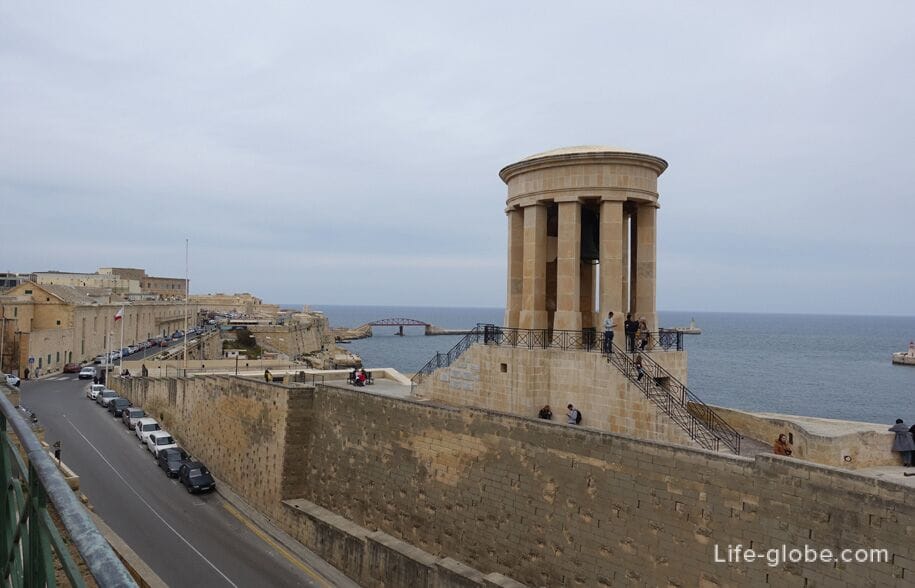
Lower Barracca Gardens
The Gardens of Lower Barrakka (l-Barrakka t'Isfel) are a city park and recreation area built on the bastion of St. Christophe in the 19th century.
The gardens are equipped with alleys for walking, places to relax, there is a small fountain, terraced arches, monuments and statues.
The terraces of the gardens offer panoramic views of the entrance to the Great Harbor, including The outskirts of Malta, as well as the Ricasoli Fort, the embankment, the breakwater and part of the Maltese shipyard. More about the gardens of the Lower Barracca...
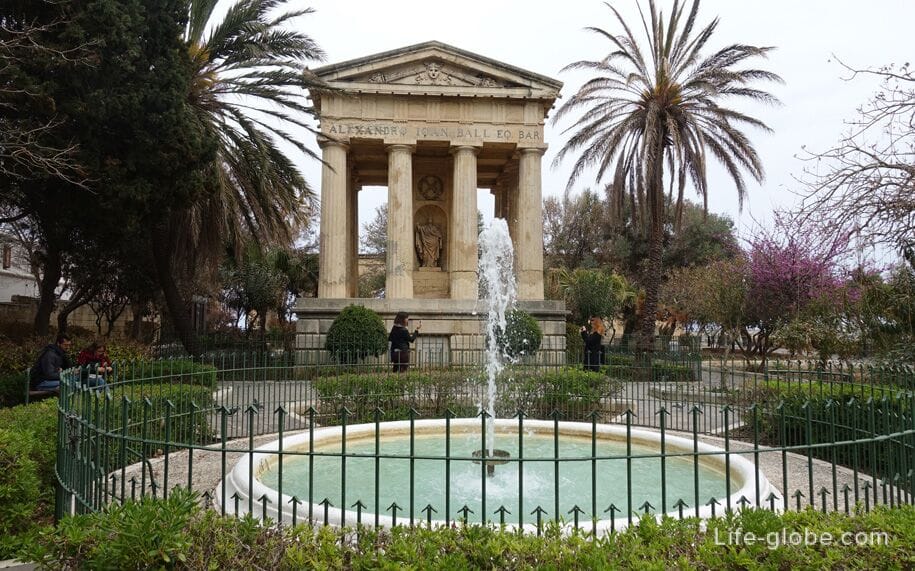
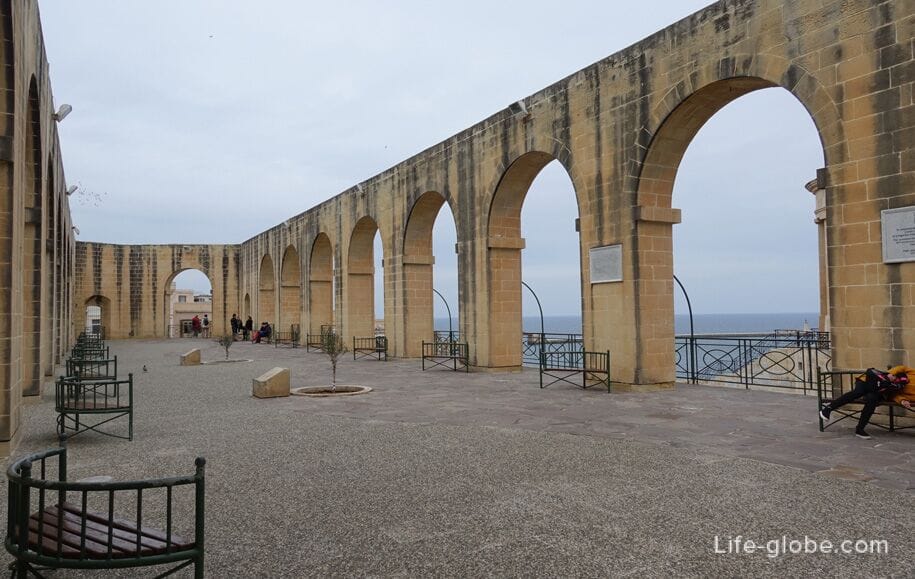
Victoria Gate
Victoria Gate (Victoria Cate) is a former city gate built by the British in 1885 and named after Queen Victoria.
The gate was the main entrance to the city from the Big Harbor. It was once the busiest part of the city. The gate is located between Marina Curtein (Curtain) and the bastion of St. Barbara, on the site of the Gate Del Monte of the 16th century.
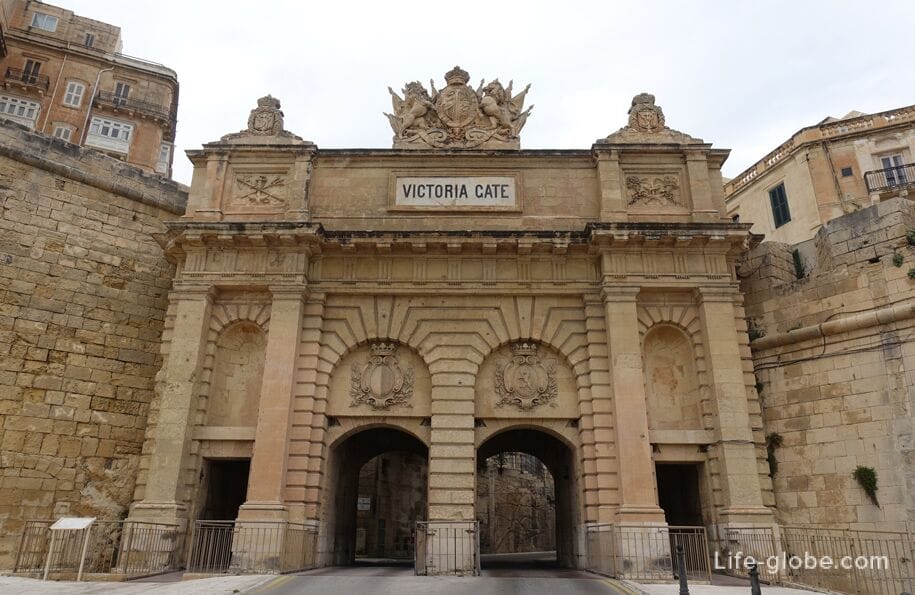
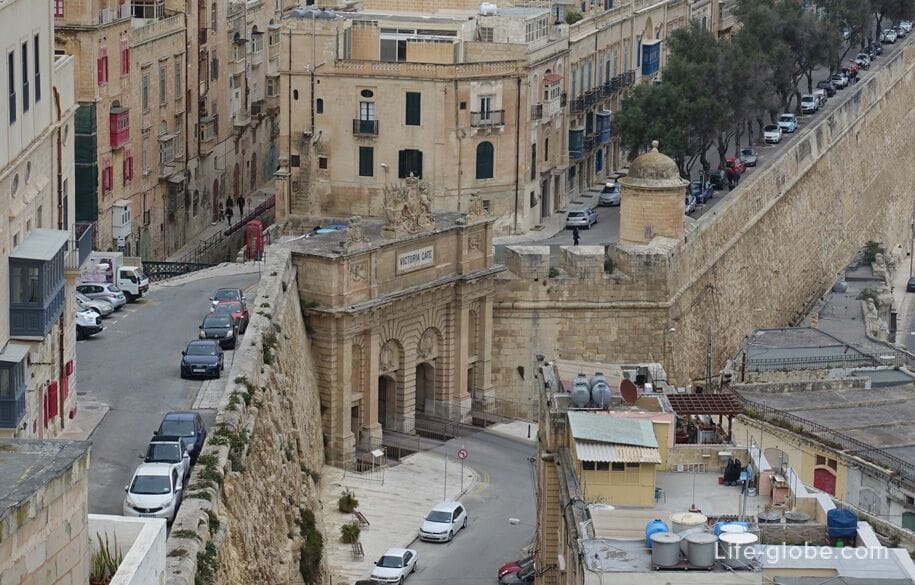
Church of Our Lady of Lisse
The Baroque Church of Our Lady of Liesse was built in 1740 on the site of a 17th-century church.
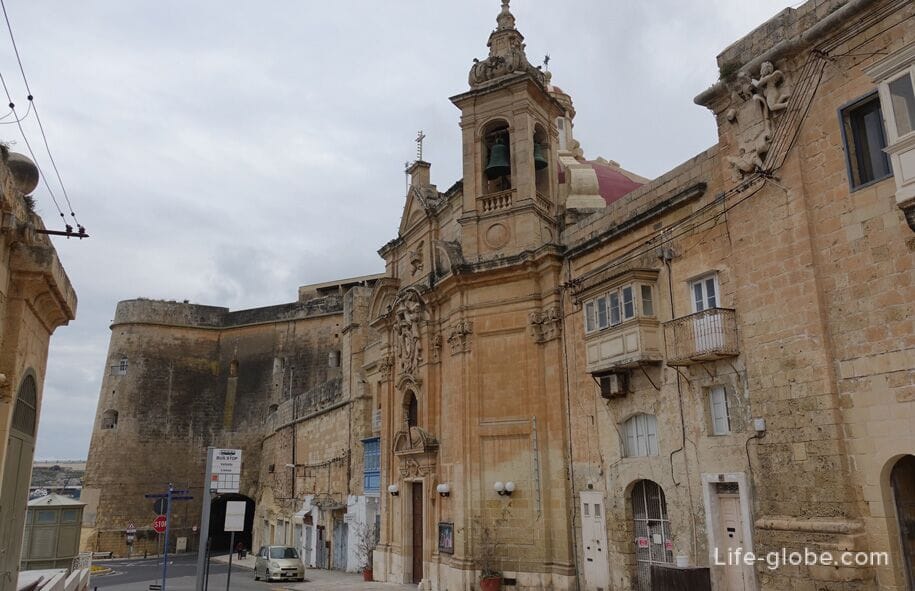
Upper Barracca Gardens
The Upper Barrakka Gardens (Il-Barrakka ta' Fuq) is Valletta's most famous and visited park, located on the upper tier of the bastion of Saints Peter and Paul, built in the 1560s.
The park is equipped with walking paths and places to relax, there is an outdoor cafe and a small fountain. The park is also decorated with terraced arches, monuments and memorials to a number of outstanding people.
The terraces of the gardens offer stunning panoramic views. More about the Upper Barracca Gardens...
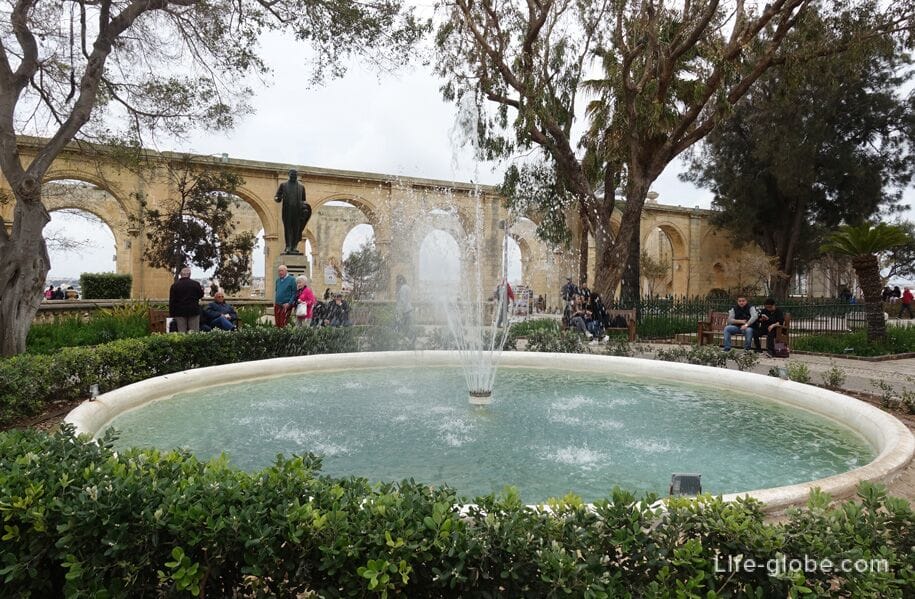
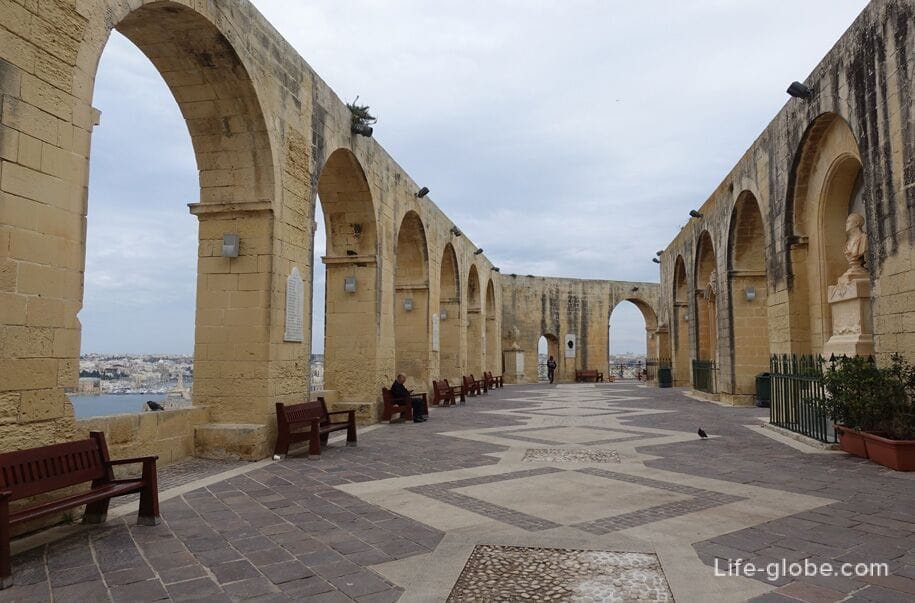
Salute battery
The salute battery (Batterija tas-Salut) is located a level below the upper platform of the Upper Barracca Gardens - under the garden (formerly the lower tier of the Peter and Paul Bastion).
The artillery battery was built in the 16th century by the Order of St. John on or near the site of the Ottoman battery of the Great Siege of Malta.
The battery was used mainly for firing ceremonial cannons and signals, but sometimes it was also used for military purposes, for example, during the blockade of 1798-1800 and the Second World War. The battery remained an active military installation until its weapons were seized by the British in 1954. At the beginning of the 21st century, the battery was restored and opened to the public. After restoration, the battery was initially equipped with eight original 24-pounder Blomefield guns manufactured between 1790 and 1810, but they were later transferred to the museum and replaced in 2011 with working copies of 32-pounder SBBL guns. During the restoration work in 2011, about a hundred stone cannonballs were found at this place.
The guns are currently operational. Firing from a cannon in a salute battery occurs, as a rule, twice a day - at noon and 16:00 hours.
Entrance to the territory of the salute battery is paid. A small exhibition complex is also open. Entrance is from the Barracca Gardens.
Website: salutingbattery.
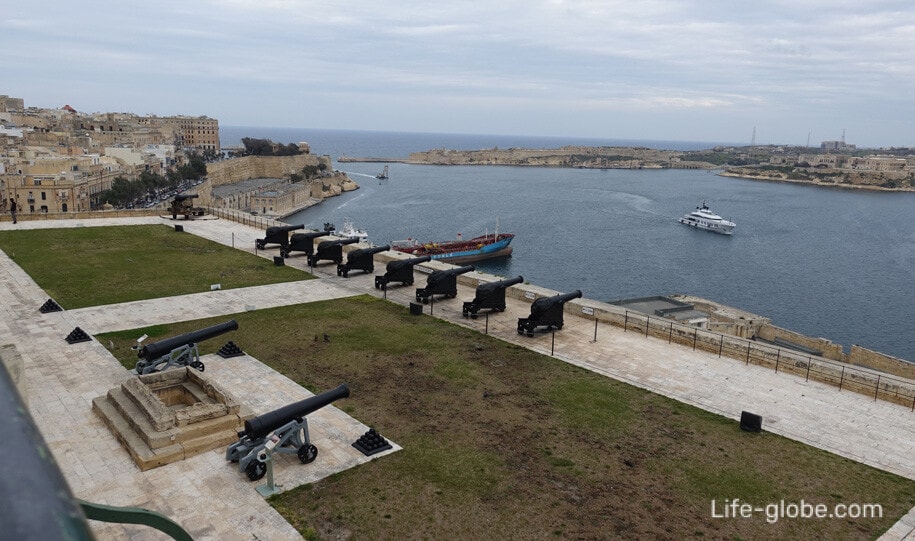
Castile Square
Castille Square is one of the central and largest squares in Valletta.
The square is located on a hill - the bastion of St. James (St. James).
The Square of Castile has an irregular shape, along its perimeter there are some of the important buildings in Valletta, which are the sights of the city. The center of the square is decorated with a small fountain, as well as monuments and sculptures.
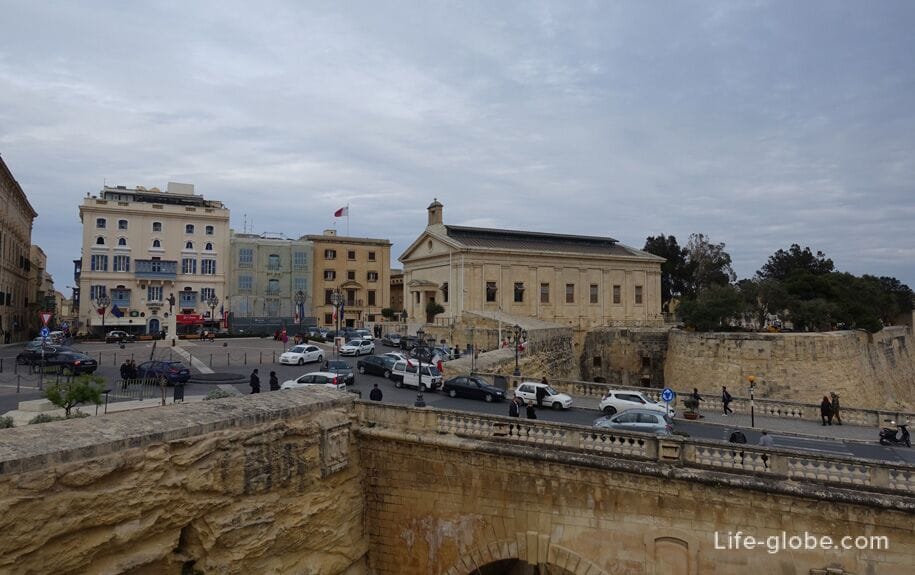
On and near the Square of Castile are:
- Cavalier of St. James (Kavallier ta 'Sanakakbu) of the 16th century, built by order of the Order of St. John;
- The Castile Hotel (Auberge de Castille) is the main decoration of the square.
The original building was built in the 1570s as the home of the Knights of the Order of St. John. The current building dates back to the 1740s, when it was completely rebuilt during the magistracy of Manuel Pinto da Fonseca. The new building was built in the Baroque style with a rectangular layout and a central courtyard. The house was named "The Best building in Malta".
Now the office of the Prime Minister of Malta is located in the walls of the building;
- The building of the Maltese Stock Exchange (Borża ta' Malta), which was originally known as Casino della Borsa and is the stock exchange of Malta.
The exchange was established with the adoption of the Malta Stock Exchange Act in 1990 and began trading operations on January 8, 1992. In 1999, the exchange moved to the building of the former garrison chapel on Castile Square. This religious building was built in 1857 and was used as a multi-confessional church until 1950;
- Our Lady Of Victories Chapel, erected to commemorate the victory of the Knights of the Order of St. John and the Maltese over the Ottoman invaders on September 8, 1565;
- Roman Catholic Church of Saint Catherine of Italy (Knisja ta' Santa Katerina), built in 1576 by the Italian Knights of the Order of St. John;
- The headquarters building of the Central Bank of Malta (BankentEntrali ta’ Malta), built in the early 20th century. The bank has occupied the building since 1967, but agreed to lease the premises only in 1968, with a contract for almost a hundred years. In 1968, the interior of the building was demolished, preserving the neoclassical facade. Since 2004, the building has been purchased from the Maltese government by a bank. Learn more about the Square of Castile...
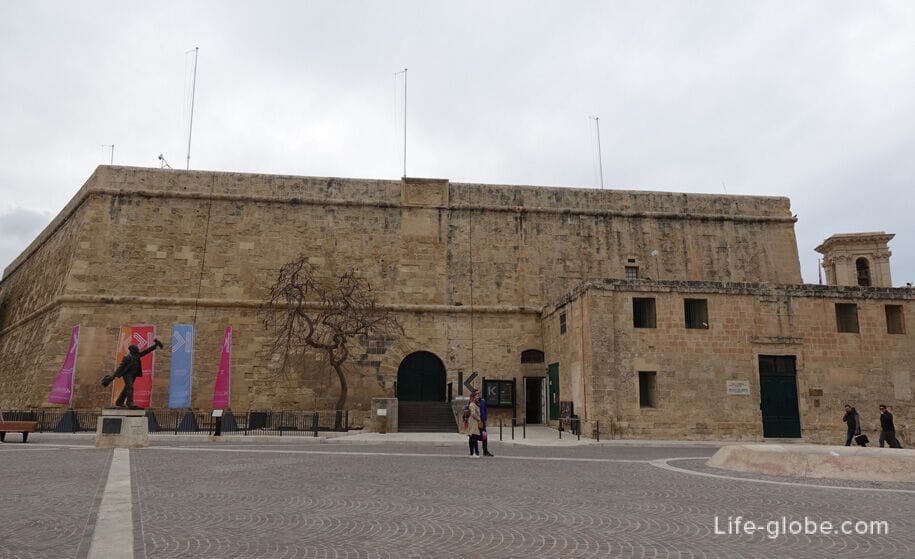
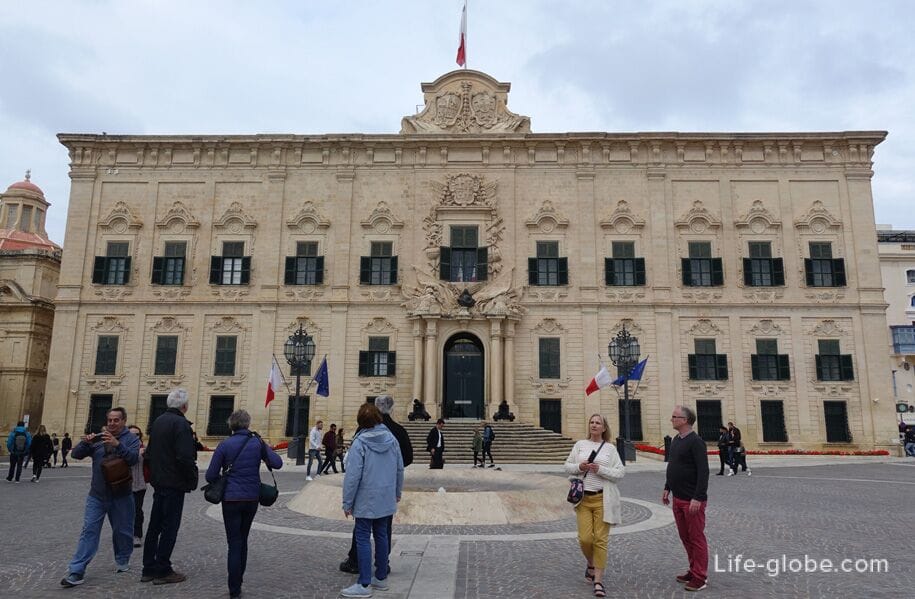
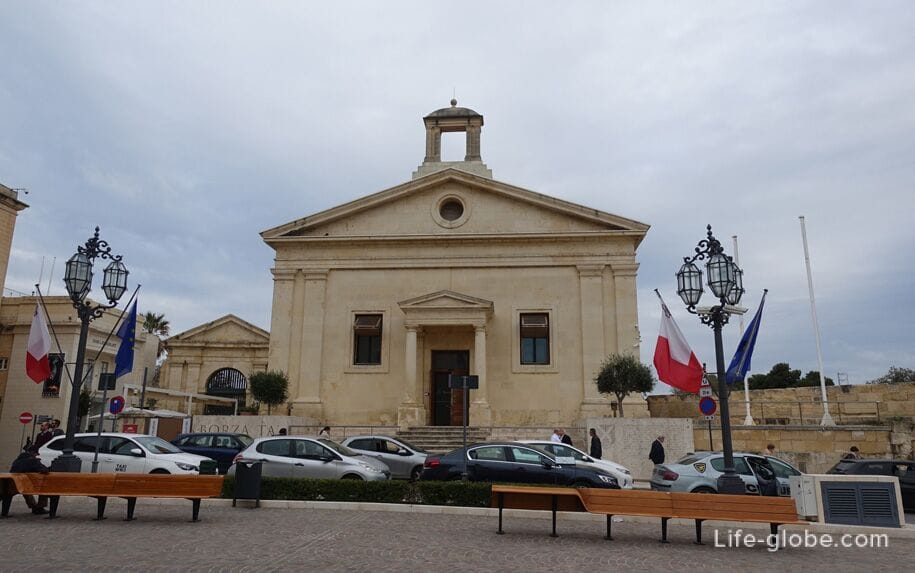
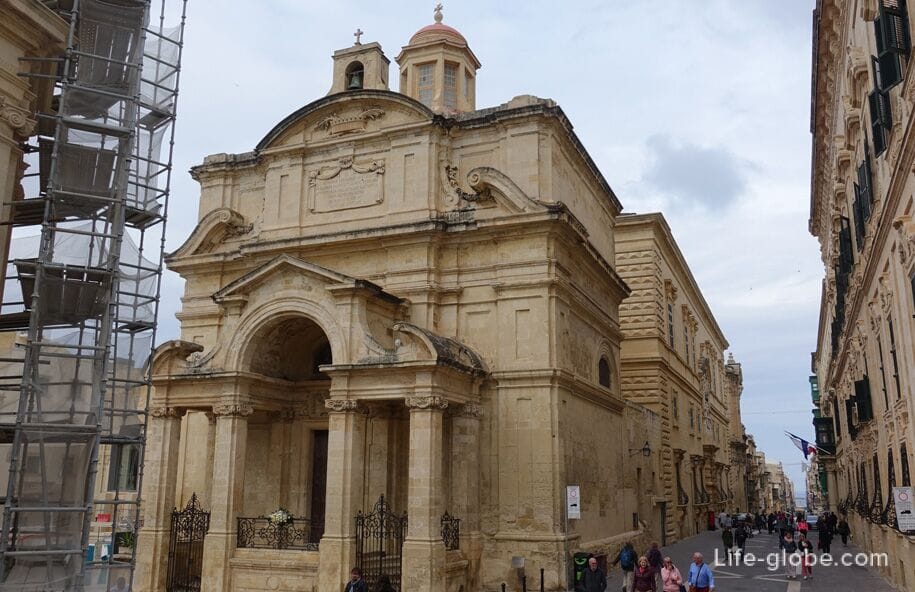
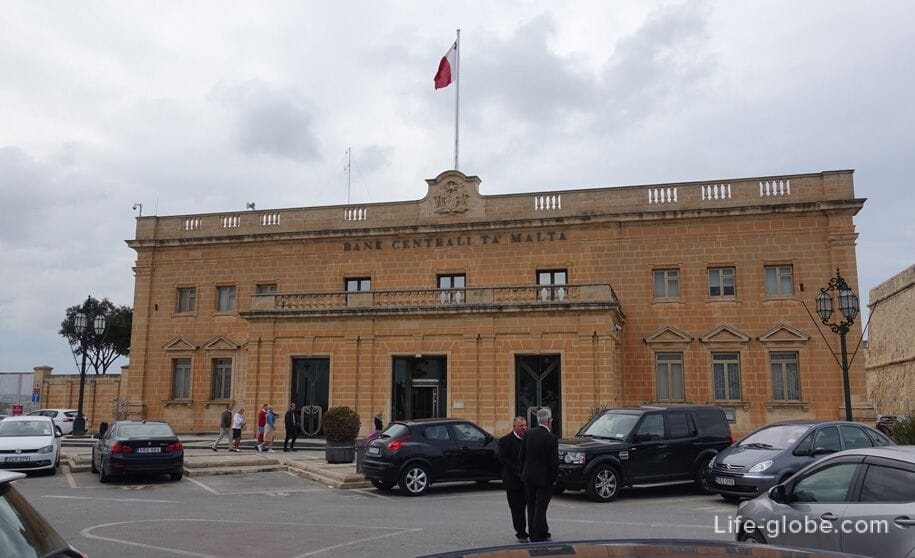
Museum of Fine Arts
The Museum of Fine Arts (MUŻA) holds collections of works by Maltese and foreign artists, mainly representing the main European art styles.
The museum is located in the historic Auberge d'Italie (Berġa tal-Italja), built in the 16th century as the home of the Knights of the Order of St. John. Subsequently, the building underwent restorations, which gave it a Baroque style. You can also visit the courtyard in the building.
Museum website: muza-national-community-art-museum/.
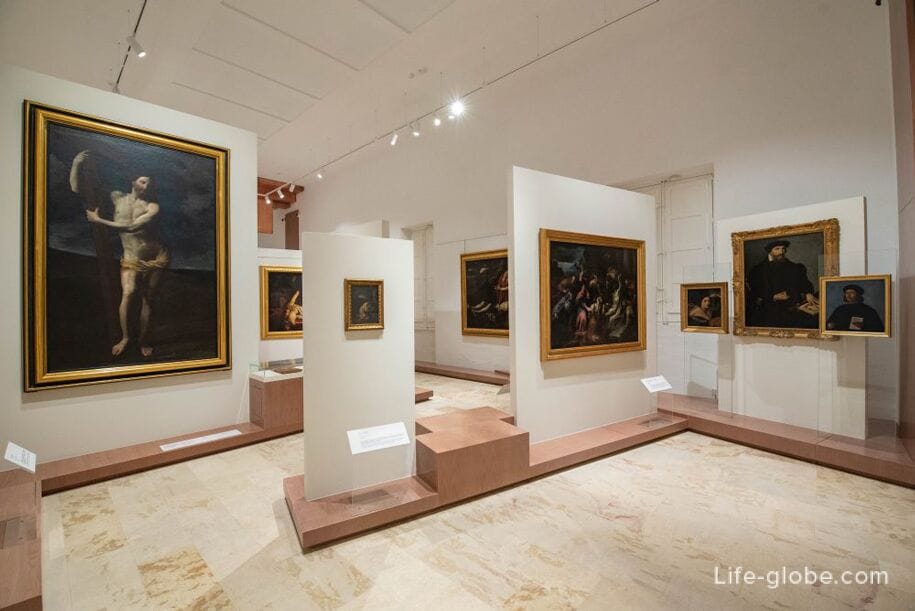
Admiralty House
The Admiralty House (id-Dar tal-Ammirall), formerly known as Casa Miari, Palazzo Don Raimondo and under several other names, is a palace in Valletta, originally built in 1569-1570 as two private houses by Jean de Soubiran Dit Arafat, Knight of the Order of St. John. The houses were later leased to various owners, including Fra Raimondo de Souza y Silva, who rebuilt them into a single residence between 1761 and 1763.
From 1821 to 1961, the building was the official residence of the Commander-in-Chief of the Mediterranean Fleet, hence its name.
From 1974 to 2016, the building housed the National Museum of Fine Arts, which today is called the Museum of Fine Arts and is located in the Berġa tal-Italja building (the museum is described above).
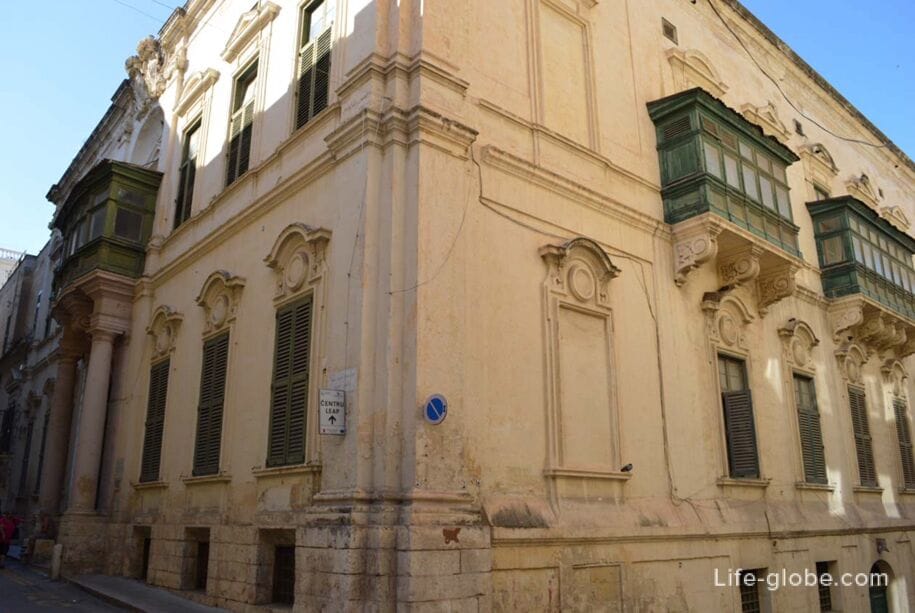
Cavalier of St. John
The Cavalier of St. John (Kavallier ta' SanwWann) was built in the 16th century by the Order of St. John.
Today the building is occupied by the Embassy of the Order of Malta, the successor of the Order of St. John.
The Cavalier of St. John is a large pentagonal casemate artillery platform and occupies the rear part of the bastion of St. John.
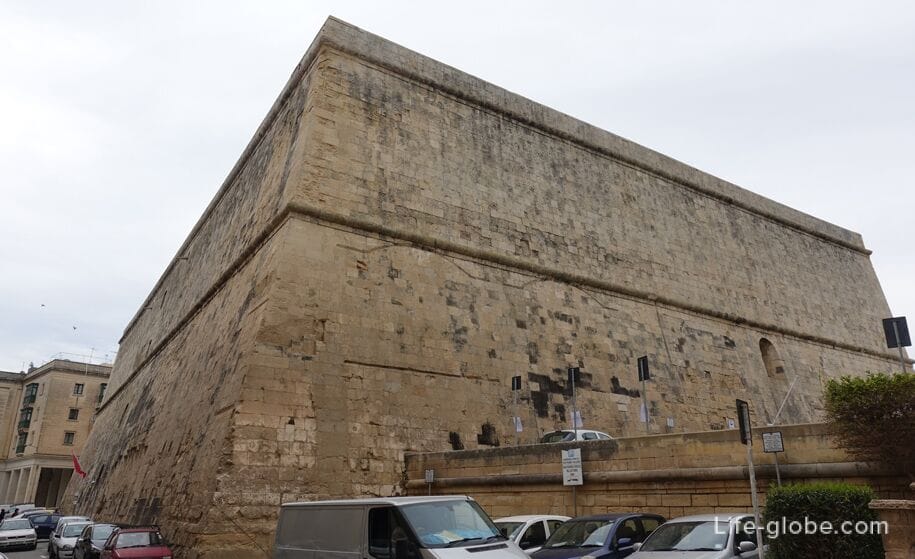
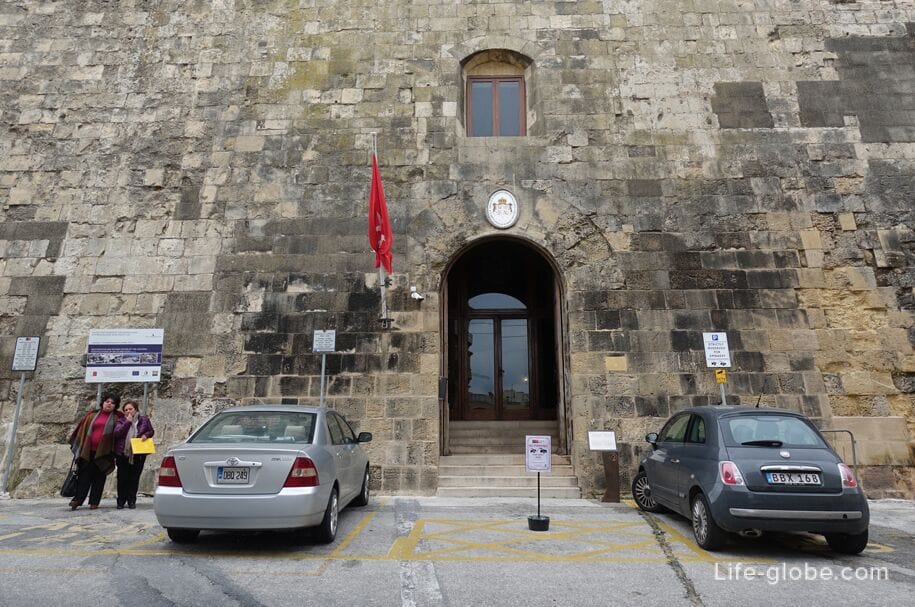
Hastings Gardens
Hastings Gardens (Hastings Garden) are located on top of the bastions of St. John and St. Michael.
Today, the gardens are publicly accessible and they contain: walking paths, places to relax, a fountain, old cannons, a memorial, a khachkar (memorial) and a tomb in honor of Francis, 1st Marquess of Hastings, who was governor of Malta.
The gardens offer impressive panoramic views. More about Hastings Gardens in Valletta...
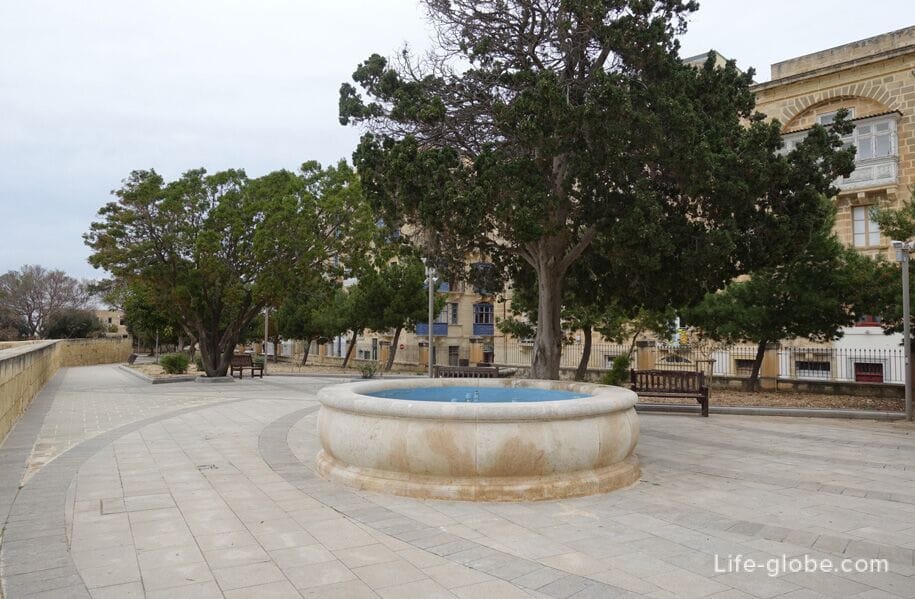
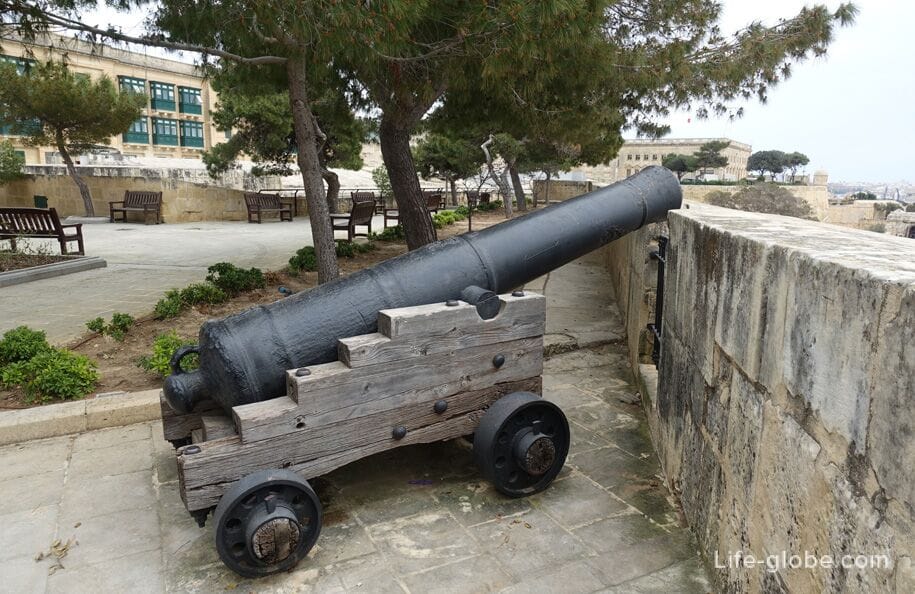
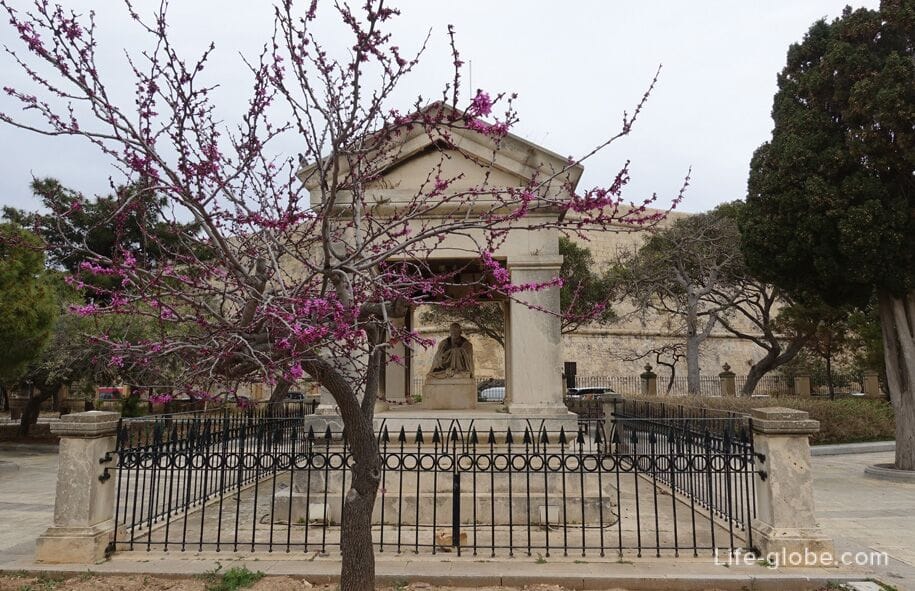
Center for the Interpretation of Fortifications
The Center for the Interpretation of Fortifications - "Fortress Builders" (Fortress Builders - Fortification Interpretation Centre) is a museum and center for the fortifications of Valletta, located in a warehouse of the late 16th century.
It is a cross between a museum, an information center and a resource center where you can find information about fortifications in Malta.
Entrance to the center is free (free of charge). Learn more about the Interpretation fortification center...
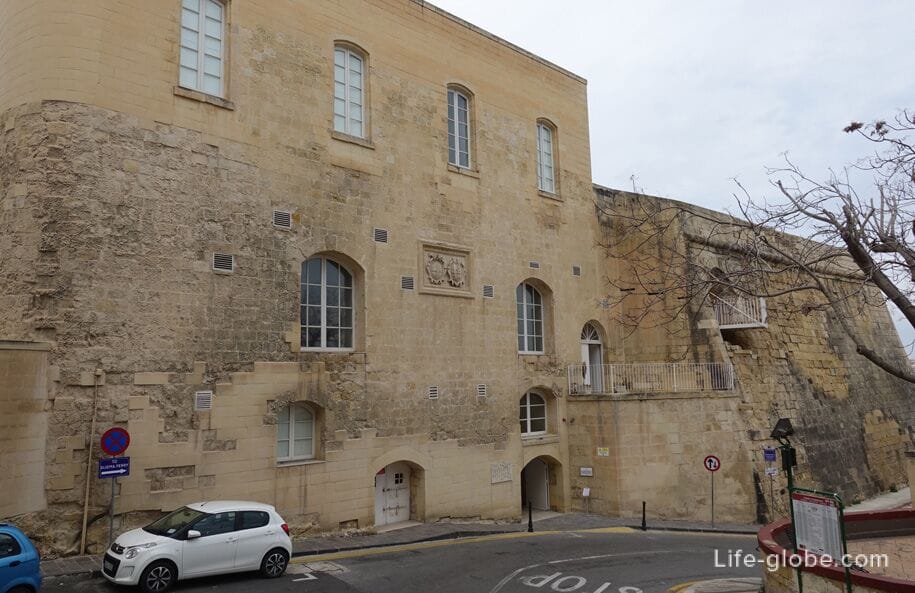
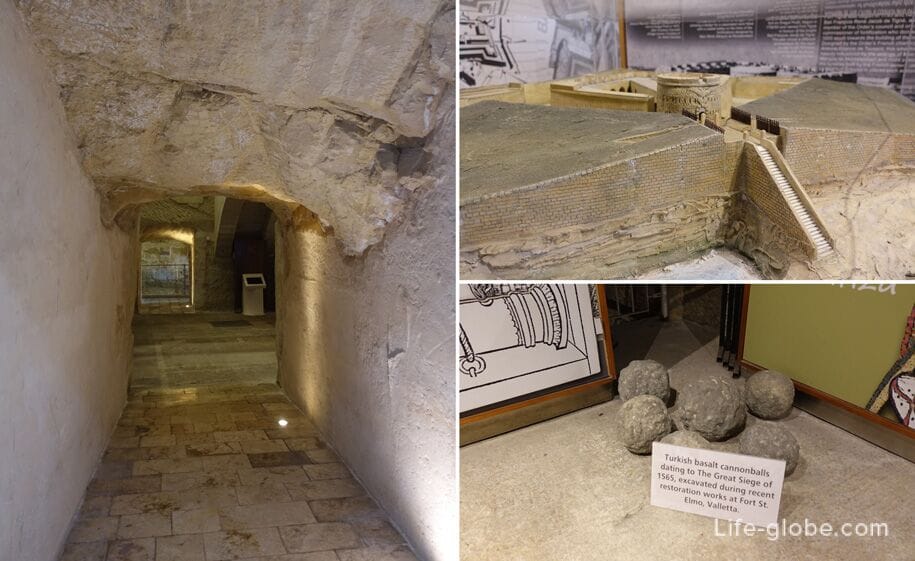
St. Paul's Cathedral
St. Paul's Cathedral (Il-Pro-Katridral ta' San Pawl), officially the Pro-Cathedral and Cathedral Church of St. Paul is an Anglican pro-cathedral located on Independence Square in Valletta, near the coast of Marsamshett Harbor.
The church was built in the neoclassical style between 1839 and 1844, by architect William Scamp, commissioned by Queen Adelaide, widow of King William the Fourth and aunt of Queen Victoria.
During its history, the cathedral was expanded and restored several times. In 2005, the temple was restored and modernized.
The cathedral is built of Maltese limestone, its internal dimensions are 33.5 x 20.4 meters. The height of the tower-spire of the north-western corner of the cathedral exceeds 60 meters. It is this spire that is the famous landmark of Valletta, which is clearly visible from the city of Sliema. More about St. Paul's Cathedral...
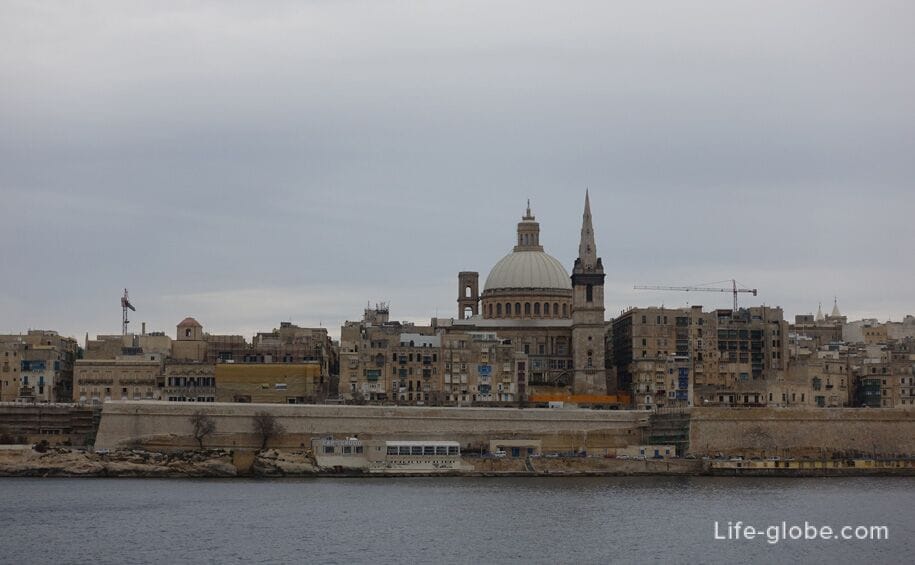

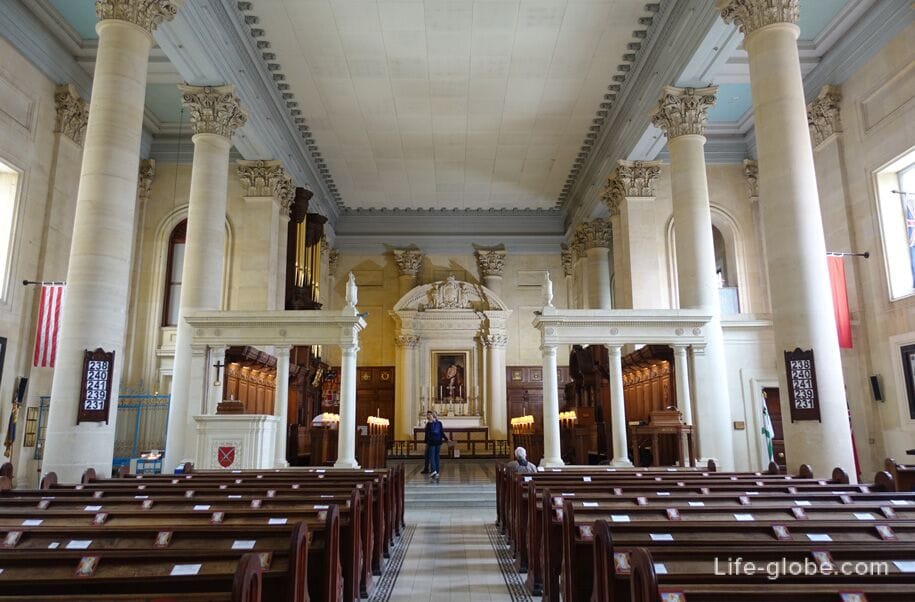
St. John's Square and La Valletta Cathedral
St. John's Square (Pjazza SanwWann) is a small square located in the heart of the historical part of Valletta.
The Roman Catholic Cathedral of St. John, also known as La Valletta (Kon-Katidral ta' San Ġwann) and dedicated to St. John the Baptist, faces the square.
The cathedral was built by the Order of St. John between 1572 and 1577 by order of Grand Master Jean de la Cassiere as the monastery Church of St. John (Knisja Konventwali ta 'San aliwann).
In the 17th century, the interior of the cathedral was restored in the Baroque style by Mattia Preti and other artists. Currently, the interior of the cathedral is considered one of the best examples of high Baroque architecture in Europe.
Entrance to the cathedral is paid. Cathedral website: stjohnscocathedral. More about the square and the cathedral...
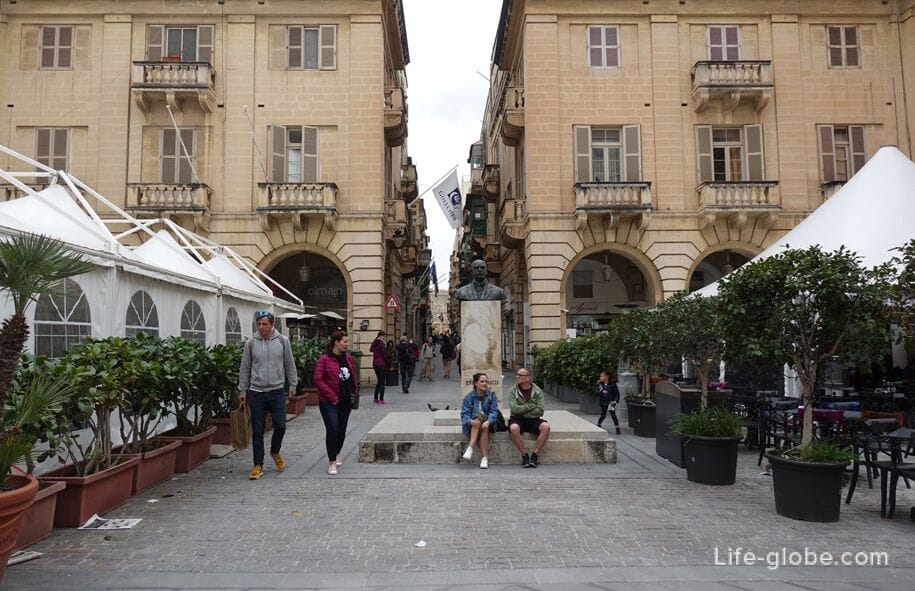
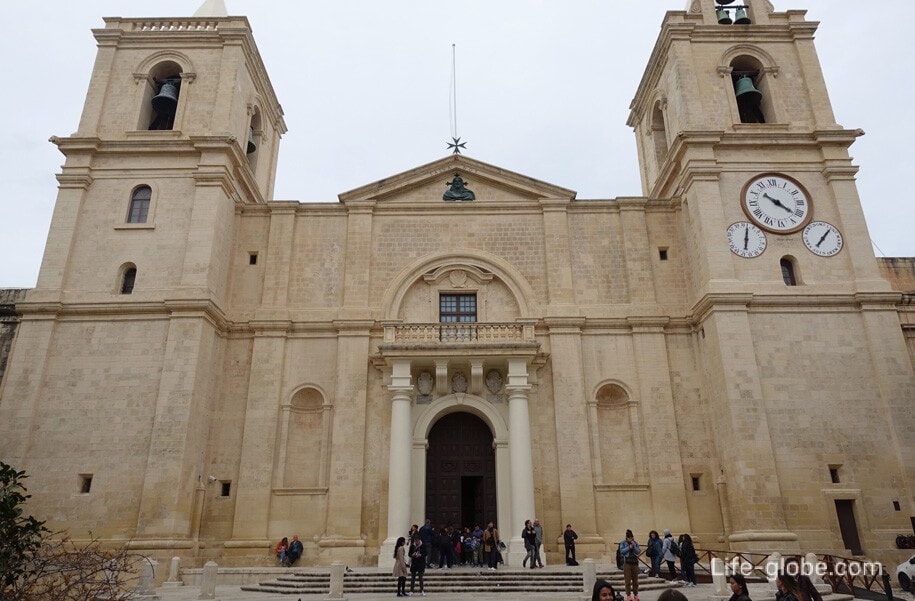
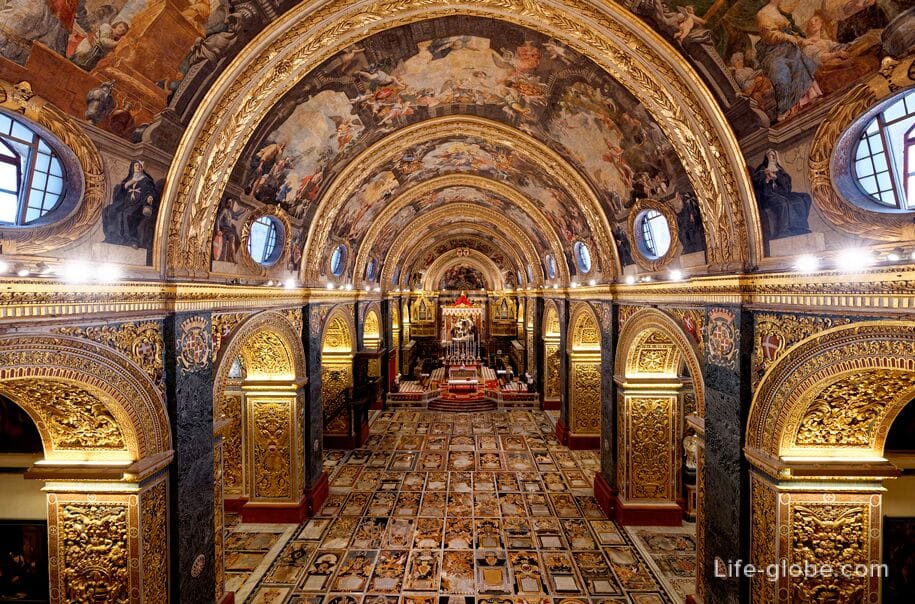
Great Siege Square
The Great Siege Square is one of the central squares of Valletta, along the perimeter of which several historical buildings, monuments and monuments are concentrated, there is also a cafe and a restaurant.
The end of Valletta's main cathedral, St. John's Cathedral, faces the Great Siege Square. The entrance to the cathedral is carried out from the square, while the main entrance to the cathedral is located on the nearby St. John's Square (the square and the cathedral are described above).
The main decoration of the Siege Square is the Great Siege Monument, a monument by the famous Maltese sculptor Antonio Shortino, opened in 1927 in memory of the victims of the Great Siege of 1565.
Opposite the monument is the Courts of Justice building, built in neoclassical style between 1965 and 1971 on the site of the Auberge d'Auvergne, erected by the Knights of the Order of St. John and destroyed by aerial bombing in 1941 during World War II.
The Courthouse was built according to the designs of architect Joe Ton in the neoclassical style, and its main feature is a portico with tall columns. More about the Great Siege Square in Valletta...

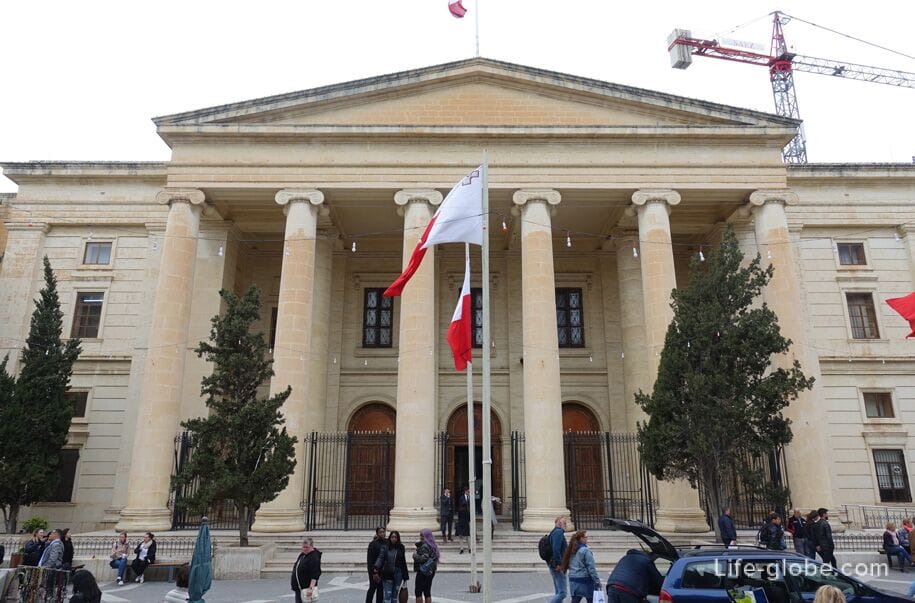
Republic Square
Republic Square (misra ir ir-Repubblika) is one of the most popular squares in Valletta.
On the Republic Square there are:
- the building of the National Library of Malta (National Library of Malta), near which are located: the statue of Queen Victoria and an open-air cafe;
- The House of the National Treasury (Casa del Commun Tesoro), originally built to house the treasury of the Order of St. John. Part of the building housed the first post office in Malta, and for many years was used as government offices, a hotel and a cinema. Since the beginning of the 20th century, there has been a gentlemen's club known as Casino Maltese. More about Republic Square...
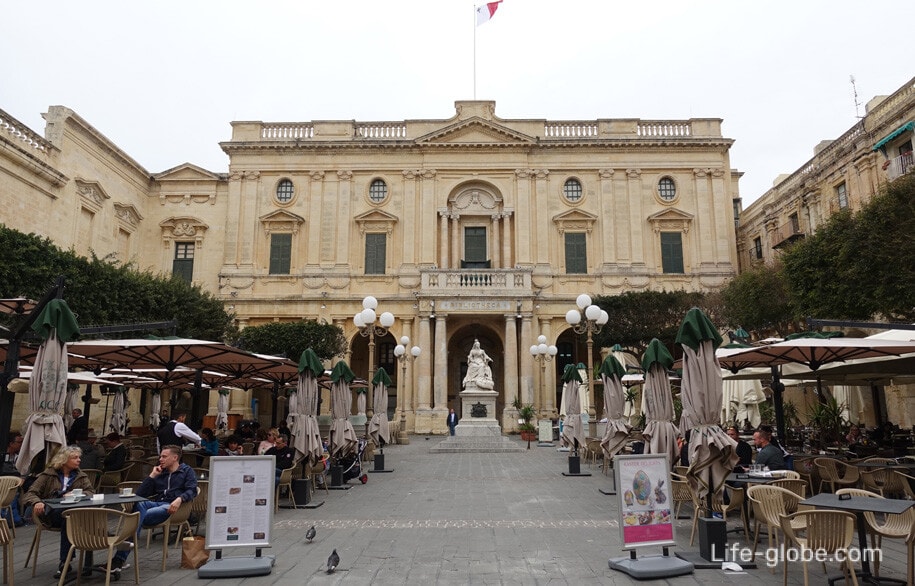
St. George's Square (Palace Square)
St. George's Square or Palace Square (St. George's Square / Palace Square) is the largest square in Valletta.
On St. George 's Square there are:
- The Palace of Grandmasters, officially known simply as the Palace (Il-Palazz tal-Granmastru), built between the 16th and 18th centuries as the palace of the Grand Master of the Order of St. John.
The building currently houses the Office of the President of Malta. Parts of the building, namely the palace halls and the armory, are open to the public as museums.
Palace Halls Museum website: palace-state-rooms;
- The Main Guard building, originally built as a guard post in 1603 by order of St. John.
In 1814, a neoclassical portico was added, as well as the British coat of arms and a commemorative inscription, installed later - over the portico. The building currently houses the office of the Attorney General;
- monument dedicated to the Maltese Revolution of 1919. The monument was opened in 1986 and is a work of art by Maltese sculptor Anton Agius. More about St. George Square...
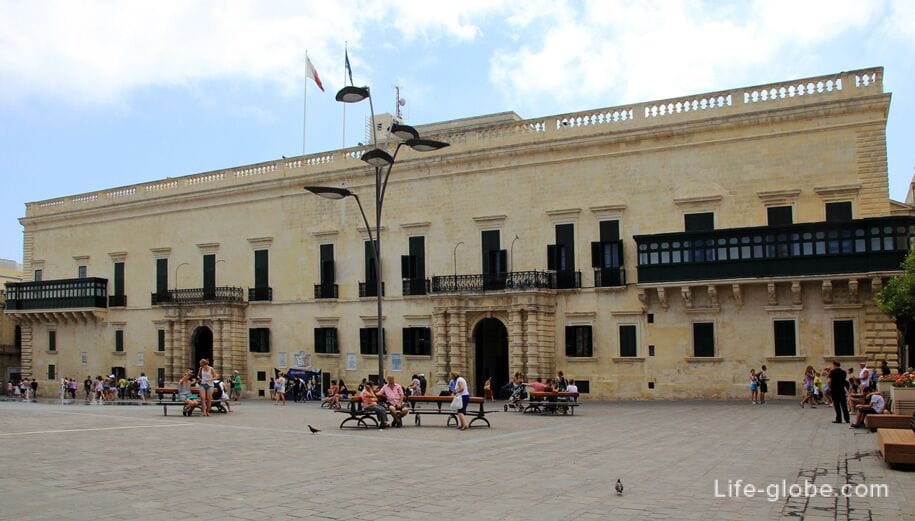
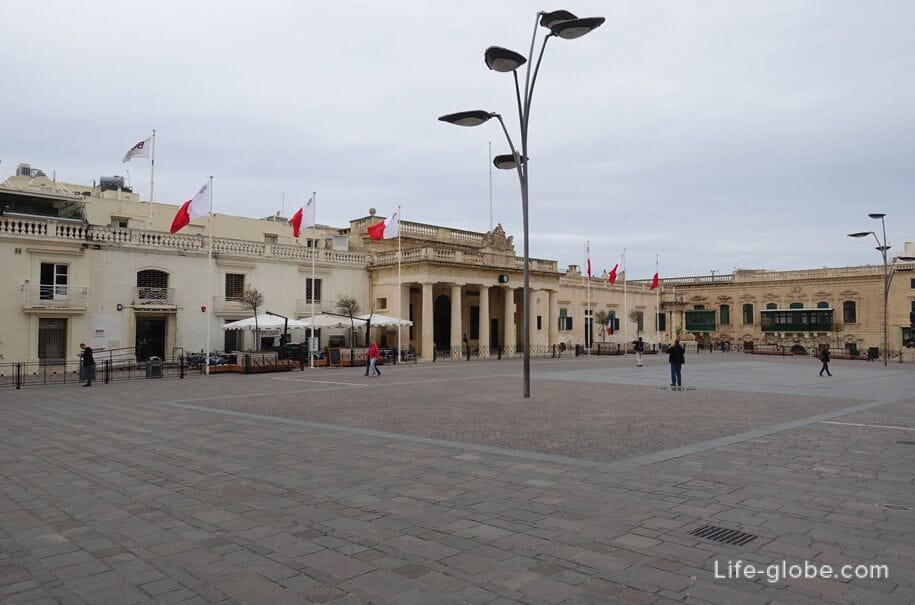
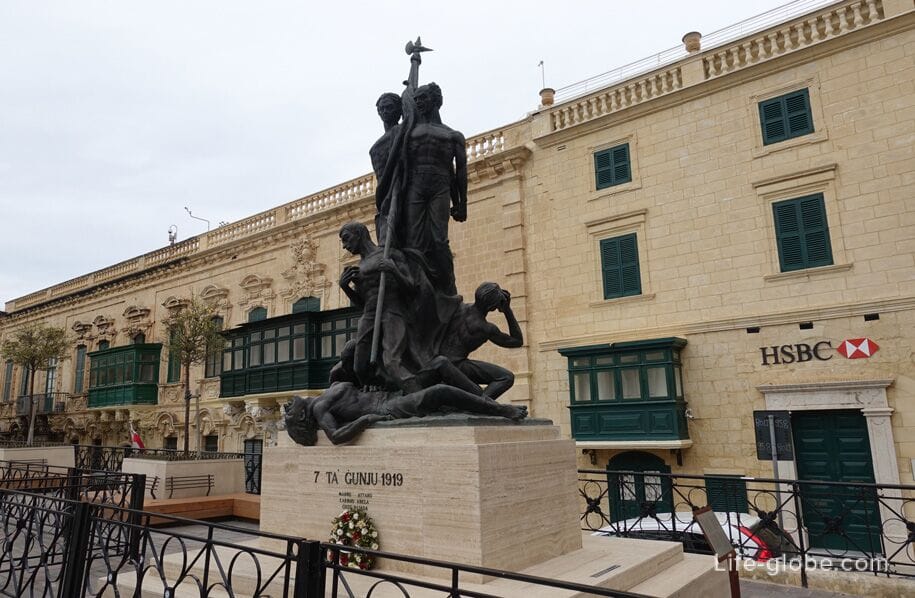
Armory of the Palace
The Armory of the Palace (L-Armerija tal-Palazz) is a museum with a collection of weapons located in the back of the Grandmasters' Palace.
It was the main arsenal of the Order of St. John in the 17th and 18th centuries, and as such it was the last arsenal created by the military Order of the Crusaders. Although only part of the original arsenal remains today, it is still one of the world's largest collections of weapons and armor, which are stored in their original building (although not in the same place).
The collections of the Armory of the Palace include:
- armor belonging to the Knights of the Order of St. John, dating mainly from about 1550 to 1650;
- sets of battle armor for regular soldiers, dating from about 1550 to 1650. The armor was produced mainly in Italy, but some of it was produced locally or in France, Spain and Germany;
- firearms, swords and other weapons dating from the 16th-18th centuries. Among them are the Ottoman weapons captured during the Great Siege of Malta in 1565;
- cannons and other artillery pieces that were used to arm the various fortifications of Malta. They date back to the 15th-18th centuries. Two cannons were recovered from the sea in 1964 during the shipwreck of the knight period in Mellieh.
Museum website: palace-armoury.
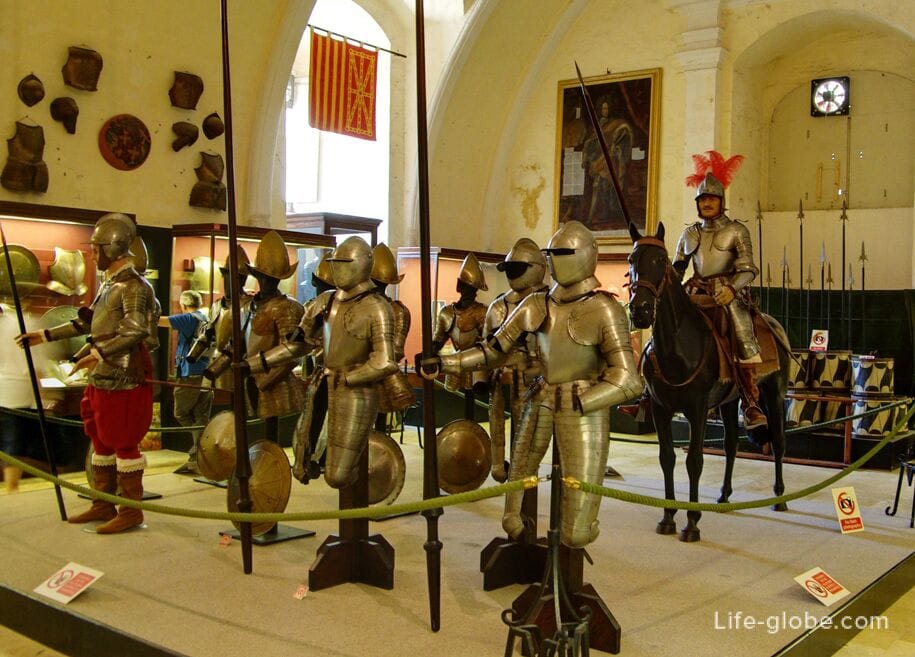

La Borsa Building
La Borsa, also known as the Exchange Buildings, is a 19th-century building housing Malta's Chamber of Commerce, Enterprise and Industry.
The site of La Borsa was originally occupied by a house that belonged to the monastery of Castile. In 1853, the house was transferred to the Maltese Chamber of Commerce and Industry, which was formed in 1848. It was demolished to make way for new premises, which were designed by Maltese architect Giuseppe Bonavia in the neoclassical architectural style. The new building was opened in March 1857.
Some features inside the building include the Lewis Farrugia Courtyard, the Sir Agostino Portelli Hall, the Aula Consiliaris Hall (meeting room), a lecture hall and a conference room.
The facade of the building has a symmetrical colonnade. The building looks simple, but at the same time elegant and contrasting with the traditional architecture of Valletta.

Spinola Palace
Spinola Palace (Spinola Palace / Palazz ta' Spinola), also known as Spinola House, is a palace formerly owned by the Spinola family (between the 17th and 18th centuries).
One third of the building was demolished in the 20th century, but the remaining two wings still exist and are currently used as the head office of Lombard Bank.
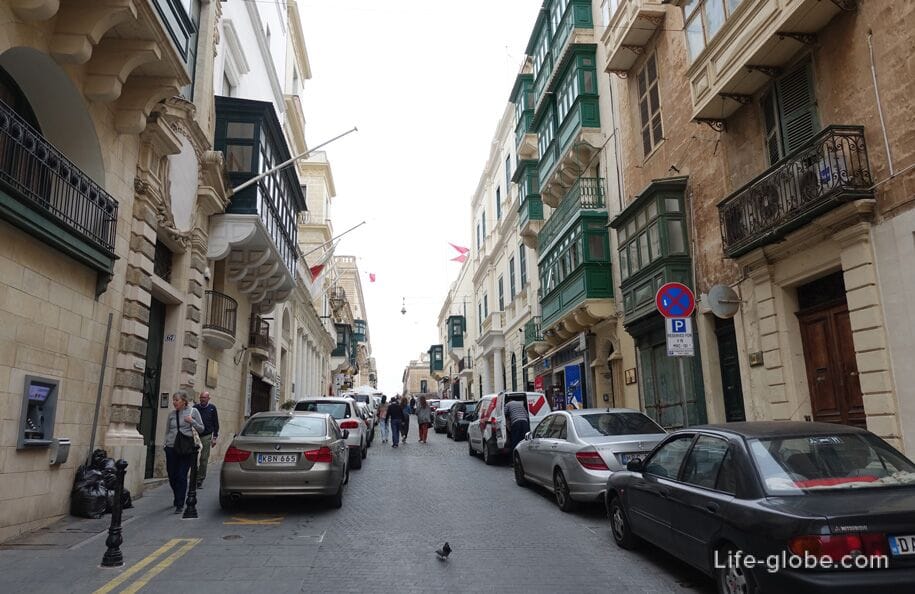
The Rossa Piccola Palace
Casa Rocca Piccola is a 16th-century palace, the home of the noble de Piro family.
The building was built in 1580, in an era when the Knights of the Order of St. John decided to build a prestigious city to compete with other European capitals such as Paris and Venice.
Casa Rossa Piccola was one of two houses built in Valletta by Admiral Don Pietro la Rocca. On maps of that time, the palace is referred to as "la casa con giardino", which means "house with a garden", since usually houses in Valletta did not have gardens.
Changes to the house were made at the end of the 18th century, in order to divide the building into two small houses. Further changes were made in 1918, and bomb shelters were added before the Second World War.
Today the palace can be visited. The house has 50 rooms, a bomb shelter from the Second World War and is furnished with collections of furniture, silver and paintings from Malta and Europe.
Also within the walls of the palace there is a private collection of antique costumes in Malta - formal and informal clothing from the 18th to the 20th centuries.
Malta has a long tradition of lace making. So, there is a private collection of Maltese lace in the palace. Lace in Malta was used for a variety of occasions, both religious and secular.
Website: casaroccapiccola.
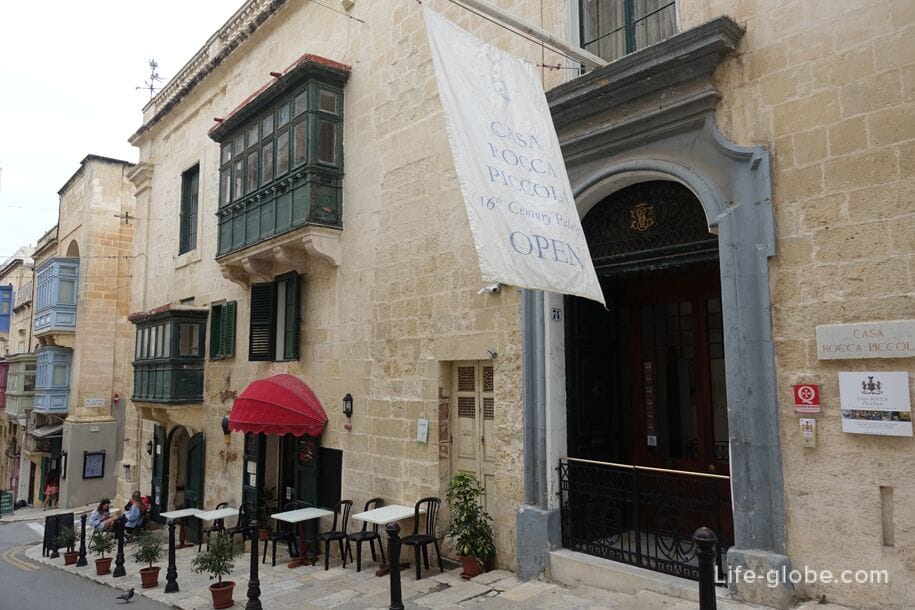
Manoel Theatre
The Manoel Theater (It-Teatru Manoel), named after the Grand Master of the Knights Hospitaller Fra Antonio Manuel de Vilen, who commissioned its construction in 1731.
The theater is considered the national theater of the country and the home of the Maltese Philharmonic Orchestra (Orkestra Filarmonika Nazzjonali).
The theater is a small space with 623 seats and an oval hall, three tiers of boxes built entirely of wood, with gilding and a pale blue ceiling that resembles a dome.
The theater building itself is an architectural monument of the 1st degree.
Theater website: teatrumanoel.

St. Paul's Shipwreck Church
The Collegiate Parish Church of the Shipwreck of St. Paul, also known simply as the Church of the Shipwreck of St. Paul (Collegiate Parish Church of St. Paul's Shipwreck) is a Roman Catholic parish church, which is one of the oldest in Valletta.
The Holy Apostle Paul is considered the spiritual father of the Maltese. His shipwreck in Malta is described in the New Testament (Acts 28, 1). St. Luke wrote: "We discovered that the island is called Melita."
The history of the church dates back to the 1570s. It was designed by Girolamo Cassar and completed in December 1582. The church was handed over to the Jesuit Fathers, and a new church was opened in 1639. The facade of the church was rebuilt in 1885 according to the project of Nikola Zammit.
The church houses works of art, including an altar by Matteo Perez d'Aleccio, paintings by Attilio Palombi and Giuseppe Cali. The wooden titular statue of St. Paul was carved in 1659 by Melchiorre Kafa, brother of Lorenzo Gafa, who designed the dome. The statue is paraded through the streets of Valletta on the day of the shipwreck of St. Paul (February 10). Also in the church you can see a relic of the right wrist of St. Paul and part of the column of San Paolo alley Tre Fontane, on which the saint was beheaded in Rome.
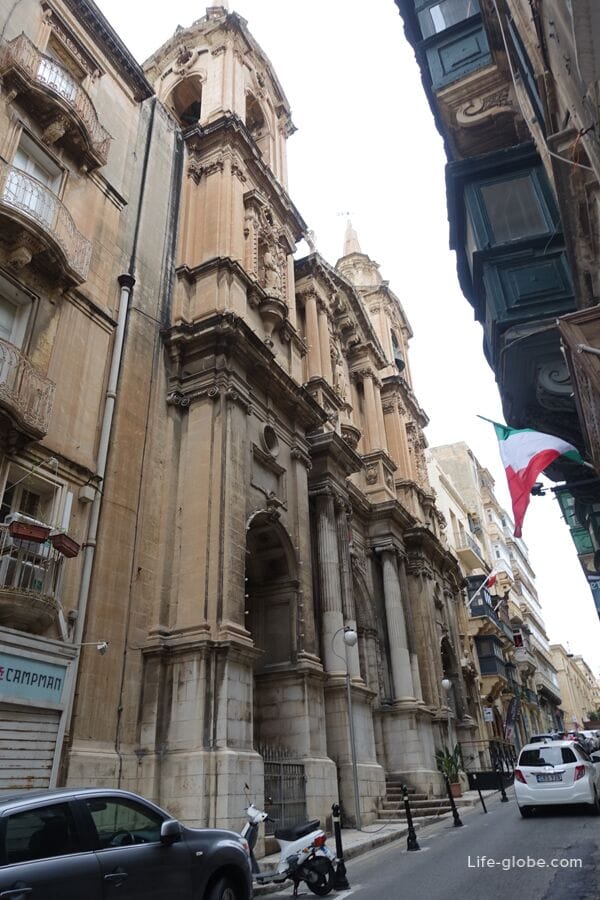
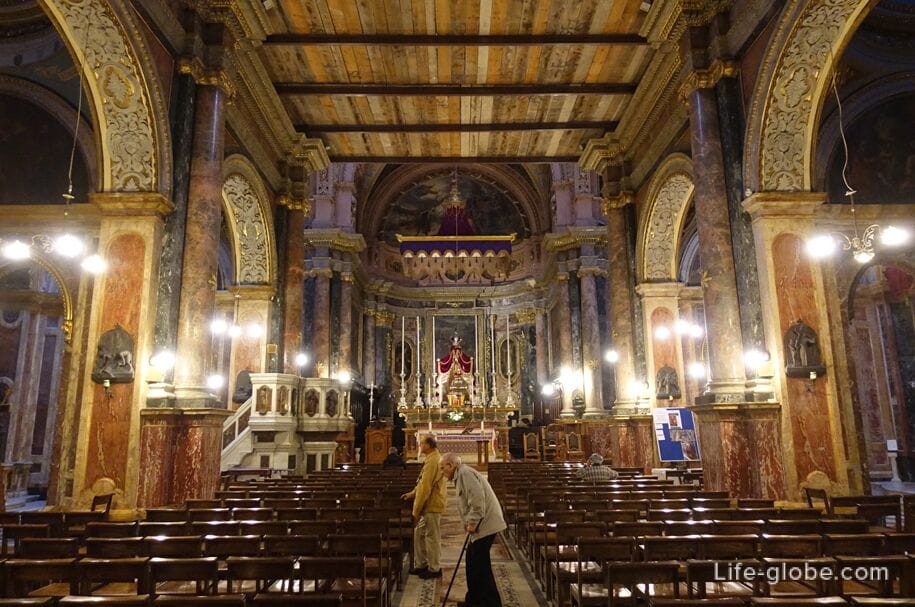
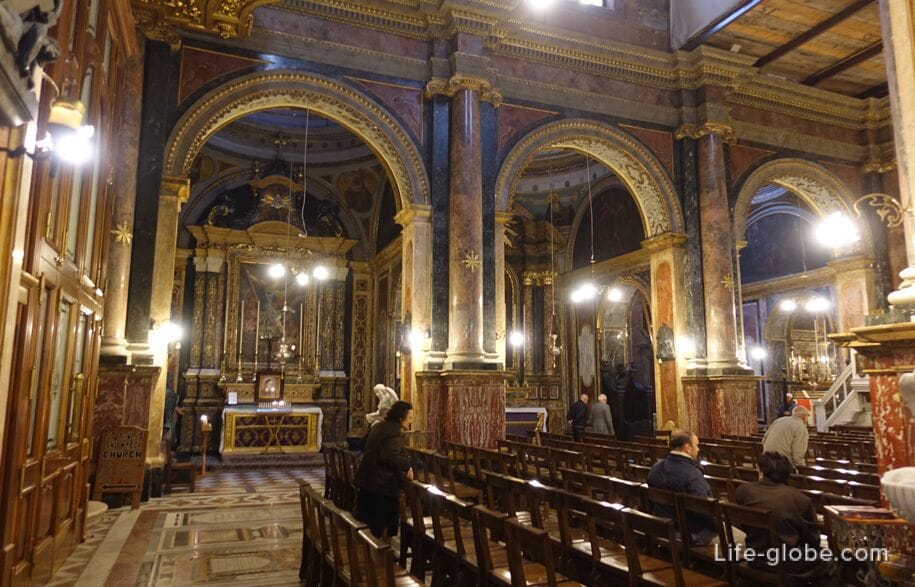
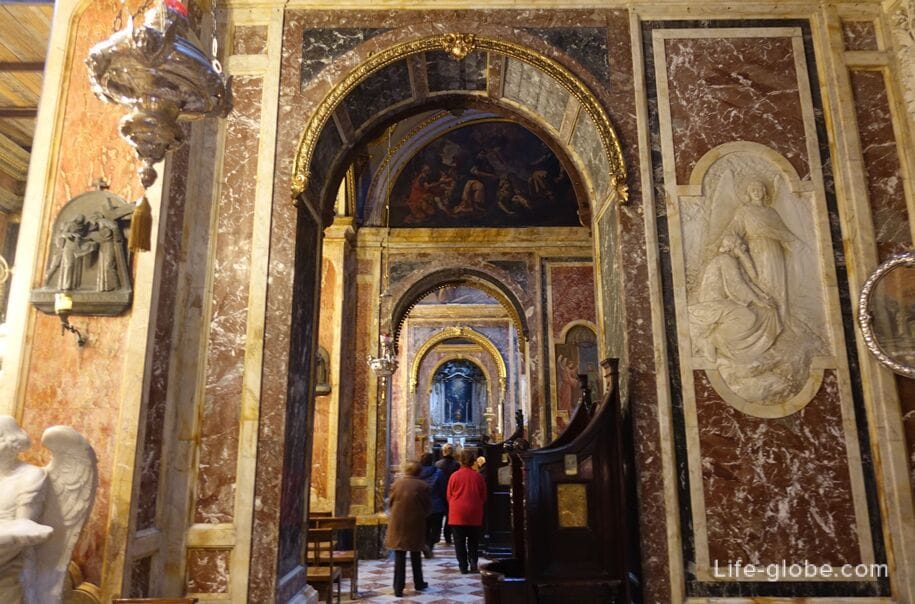
All accommodation facilities in Valletta (hotels, apartments, etc.) can be viewed and booked here
On the island of Malta and neighboring islands, you can take a tour in tour buses with an audio guide. All tours of Malta, including bus and sea, can be viewed and purchased here →








